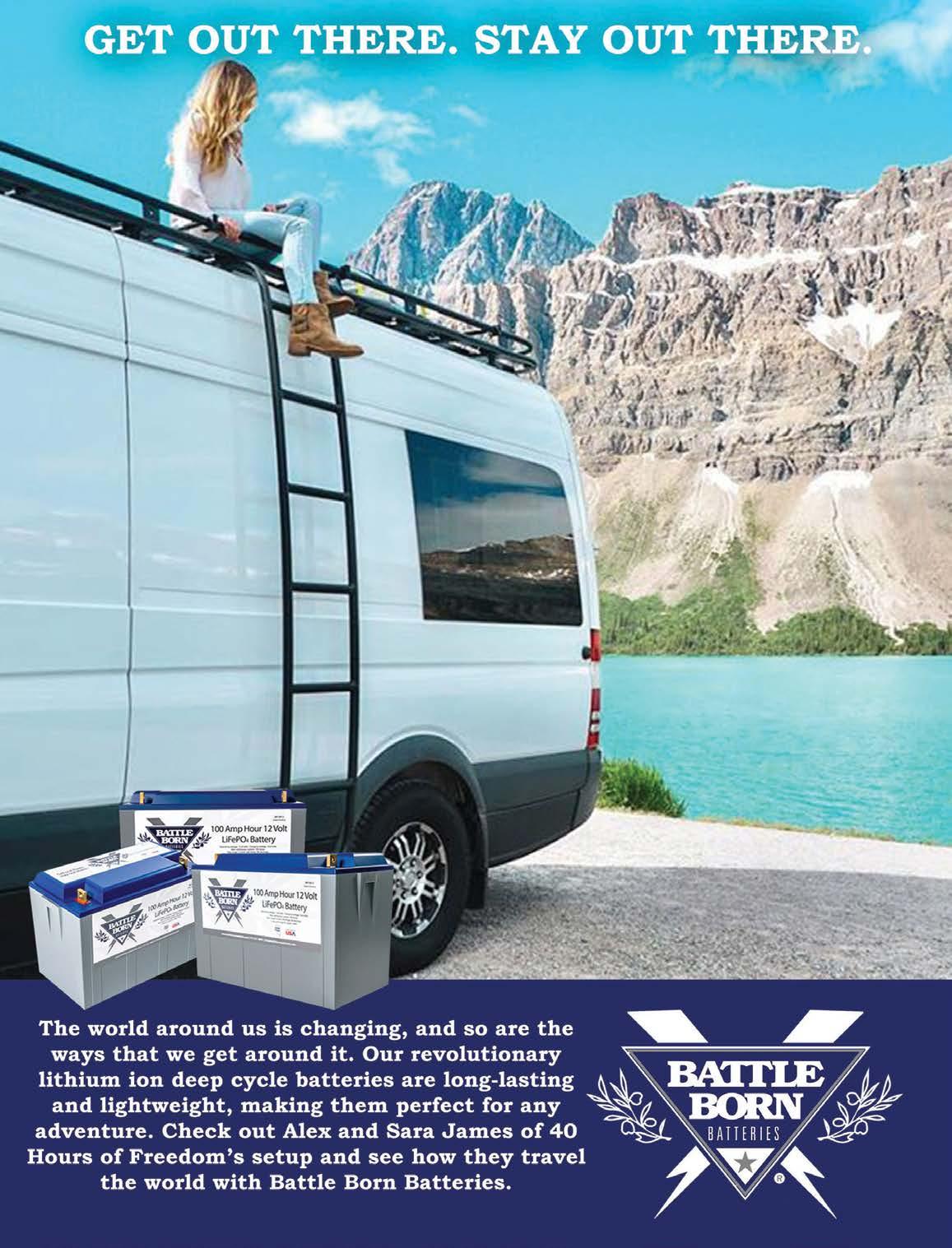RV



RV


Having a Grand Design is more than just owning an RV. It’s an experience of belonging to a vibrant, active and supportive family.
Every Grand Design RV is backed with a class-leading 3-year limited structural warranty and a customer service team known for doing the right thing.








CHOICE GOLD AWARD IN ALL 3 CATEGORIES!

LEARN MORE...
WE STRIVE FOR NOTHING LESS THAN CUSTOMERS FOR LIFE.

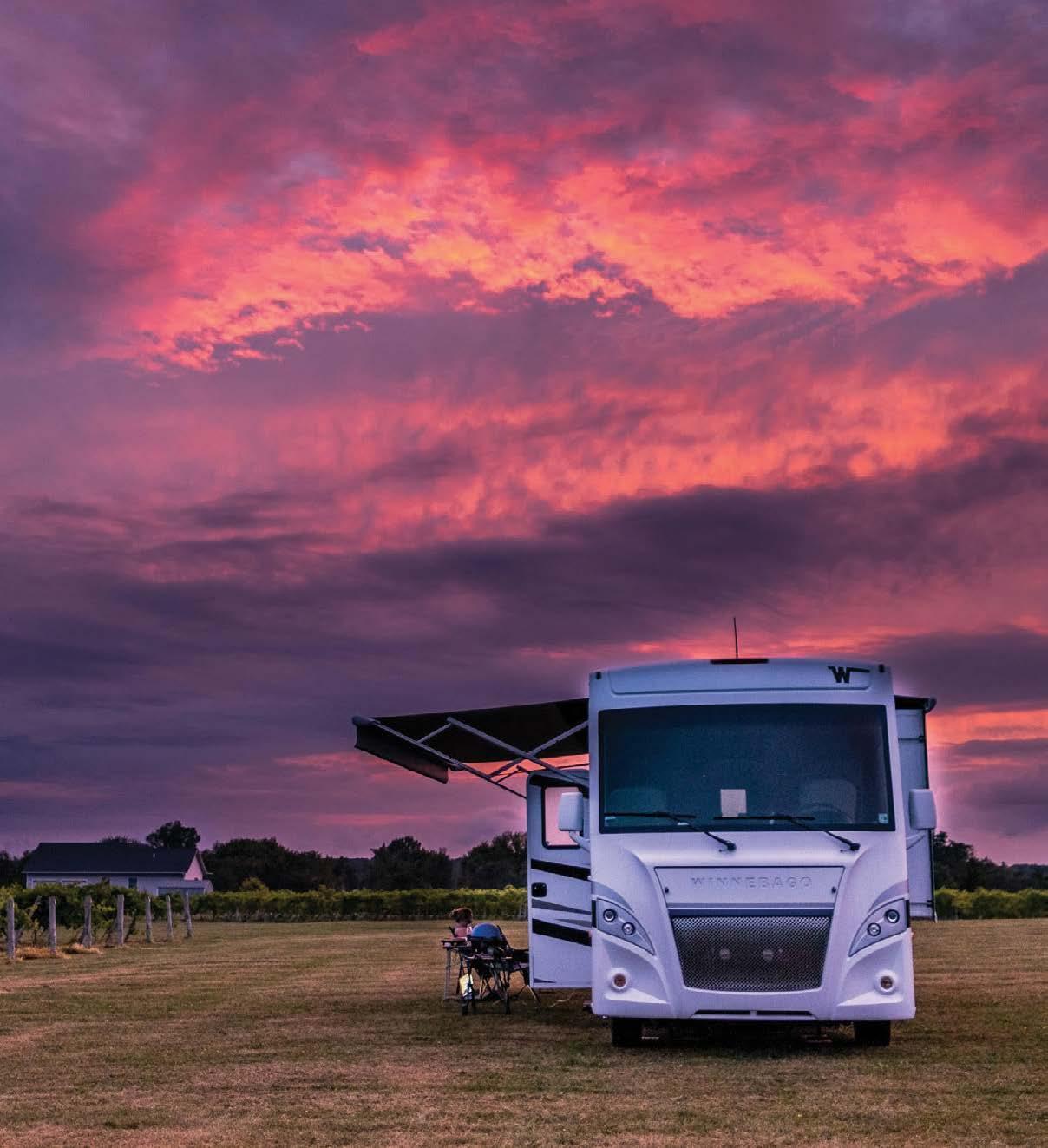
We are a network of wineries, breweries, distilleries, farms, and attractions that invite RVers to stay in 1000+ stunning camping sites. The $79 yearly membership gives members unlimited access to stay overnight at any one of our Hostʻs locations. We kindly ask our members to support their Hosts by purchasing one of their local products with each stay.
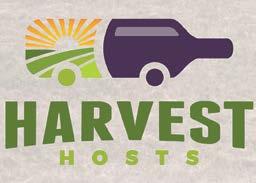



To Candice and Jordan, you’re only as old as your odometer. To prove it, they’re taking their pup, Nugget, and a ‘97 adventure van the length of the Western hemisphere as Be Old Later. Even with all that adventuring, they’ll never have to worry about a lack of energy. With a Battle Born Battery on board, power is one less limit on the adventure of their lifetime.

Follow their journey @BeOldLater:

• Same size, double the power, and a fifth of the weight of a comparable lead acid battery

• Can hold a charge up to a year in ideal conditions
• Compatible with most conventional chargers
Get out there, stay out there.SM

Page 11 | From the Publisher
Page 12 | The Feed
Page 13 | From the Editor
Page 15 | The Rideau Canal
The Best Kept Canadian Secret
Page 19 | #VanLife
The Road to Financial Freedom
Page 23 | Kreative Freedom
The RV Music Studio
Page 28 | This Adventure Family Not So Ordinary Dreams
Page 32 | Airstream to Boat and Back Again Finding Family Adventure in the Face of Failure
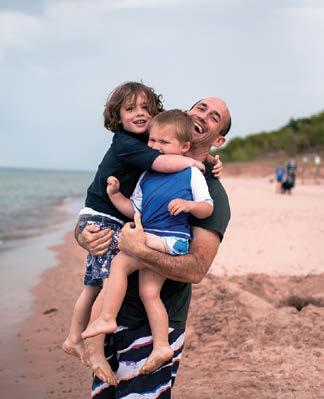
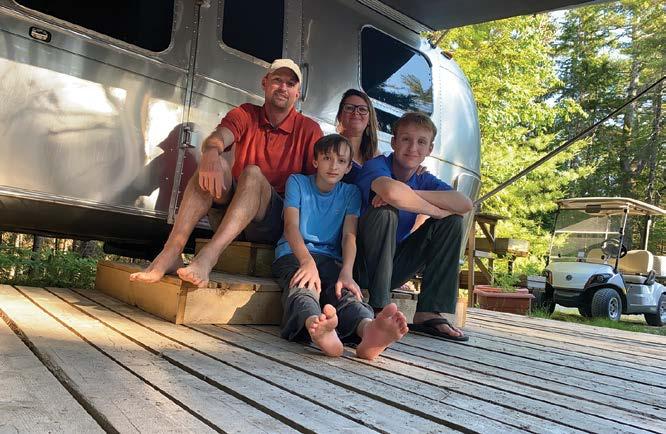
Page 35 | RV Renovations
Page 36 | The Happy Glamper Co Meet Kelsey & Drey, Our Cover Story
Page 41 | We Live On A Bus
Page 45 | Does This Count As Van Life?
Page 48 | Bringing Our Vintage Camper Back to Life

Page 51 | The Wisconsin RV Flippers
Page 55 | Relax and D-DIY (Don’t Do It Yourself)
Page 66 | Quick & Easy RV Renovations

Page 68 | Gear Guide
Page 70 | Coasting Through Oregon Guide to Highway 101
Page 73 | Favorite Boondocking Locations
Page 77 | Mount Saint Helens A Recovery in Slow Motion
Page 78 | Contributors For Digital Nomads, By Digital Nomads
Page 79 | Podcasts for the Drive
As I write this I am in Elkhart, Indiana, also known as the RV Capital of the World. The stats are insane, something like 80% of all RV’s are made here in Elkhart County. If you ever decide to come to Elkhart all it takes is a quick drive around the city to see just about every major RV manufacturer.
Because we publish a magazine about living a lifestyle which includes traveling while working, aka a Digital Nomad, I always knew at some point I would need to visit Elkhart. It’s unfortunate timing with a pandemic going on, but I spent my visit knocking on doors, visiting companies, taking tours, and meeting industry experts when they were available.
One of the highlights was visiting the RV/MH Hall of Fame and Museum. It has a massive exhibit hall of RVs from the early 1900’s all the way up until the 1980s and even some newer models. I also enjoyed visiting their library and archives of RV related publications.
My biggest take away was learning that the first travel trailer was built and designed by a salesman who spent long trips on the road and wanted to find a way to bring his family along with him. I always thought this industry started because someone wanted an easier way to camp. I was obviously shocked when I found out it was started by someone wanting to travel with his family while he worked.
The other takeaway is just how many choices we have when buying an RV. It reminds me that there is no right or wrong way to do this lifestyle. Regardless of what you choose, a motorhome, van, fifth-wheel, travel trailer, or something even more unique like on a boat or a Jeep with a tent on top, there is no wrong way. There is only the way that suits you and your lifestyle best.
I hope some of the stories shared here inspire you to start or encourage you to keep going on with your nomad lifestyle.

Until the next issue … Stay Rootless.
Demian Ross @demianross demian@rootlessliving.comAugust was the first annual Digital Nomad Month! We asked the community to share photos and tell us their digital nomad stories, here are just a few! What’s your digital nomad story? Join in on the conversation on Instagram @RootlessLivingMag
“Happy first ever digital nomad day to those who have been doing it for much longer than I have. Thanks for paving the way!”
“Rain forest or office? How about both? RV life has allowed us to trade in cubicle views for river and ocean views. I’m convinced this is the best way to work.”


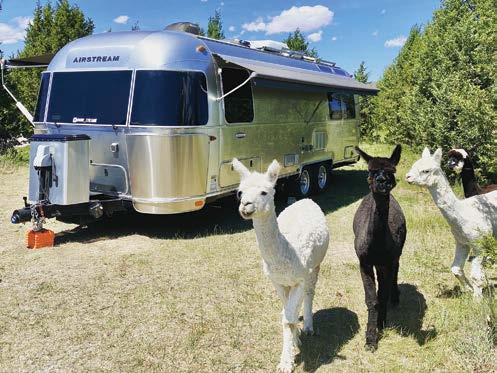

“Super thankful for Philip and how hard he works in order to make our dream of full-time travel possible!”
“Today is #DigitalNomadDay! We’ve owned our business and worked remotely for the last 8 years and we just don’t think to take pics of ourselves working. Instead I’m sharing this pic of alpacas.”
As a DIY and home decor lover, I have been looking forward to this issue since we came up with the idea to do a magazine. In fact, I’ve been looking forward to renovating an RV since before we ever purchased one.

One of my favorite things about this issue is how it all came together. While its theme is renovations and modification, as you read through the stories I hope you’ll discover like I did, that we really should be calling it the inspiration issue.
Even as a full-time nomad and RVer myself, every story moved and excited me. I just know this one isgoing to inspire so many people. From getting out of debt to just going for your dreams, with what you have and where you’re at, I hope each story featured in these pages leaves you inspired. Inspired to seek, to explore and to pursue more.
From pretty much the day we decided the 5th issue would be about renovations, I knew I wanted Kelsey of @thehappyglamperco for the issue. I can now admit, I have been fangirling hard since she first came across my feed and I am thrilled we are featuring her on our cover. It was actually hard to hold off asking her because I was so eager to chat more and get to know more about her amazing renovation.
I really wanted the issue to include the whole gamut of renovations being done in the industry and I think we succeeded. From school buses and van builds, to vintage trailers and used RVs. Even if renovating is not your thing, I hope the stories shared in these pages leave you feeling encouraged and inspired as they did me.
Nikki Kirk @nikkirk7 nikki@rootlessliving.com



There are many best kept secrets but how did we miss one that is 202km or 125 miles long, older than Canada, is still operated by hand, and recognized as a United Nations Educational, Scientific and Cultural Organization (UNESCO) heritage site?
It was right under our noses and we never thought of experiencing this amazing historical waterway that was chipped and blasted away, rock by rock, in 1832. How does the Rideau Canal in Ontario, Canada stay so humble in its grandeur? This waterway was responsible for the expansion of Canada, transportation of new immigrants from many other parts of Europe and used by the military to ensure the colonies of Britain were protected from threat of American invasion and war.
The Rideau Canal (rideau is French meaning curtain) was built after the war of 1812. It took five years to build at the command of Colonel By and was financed by the British Government. It transformed the untamed rivers and lakes from Kingston to Ottawa into the Rideau Canal. This remarkable engineering achievement was originally built to provide the army a safe route for supplying its inland garrisons avoiding direct exposure from the St. Lawrence River. It is now one of the largest recreational waterways in the region.
My guess is that you’ve never heard of it or even thought of it as a bucket-list destination. Sit back and let me tell you about our journey along the Canal and why The Rideau Canal needs to be on your bucket list.
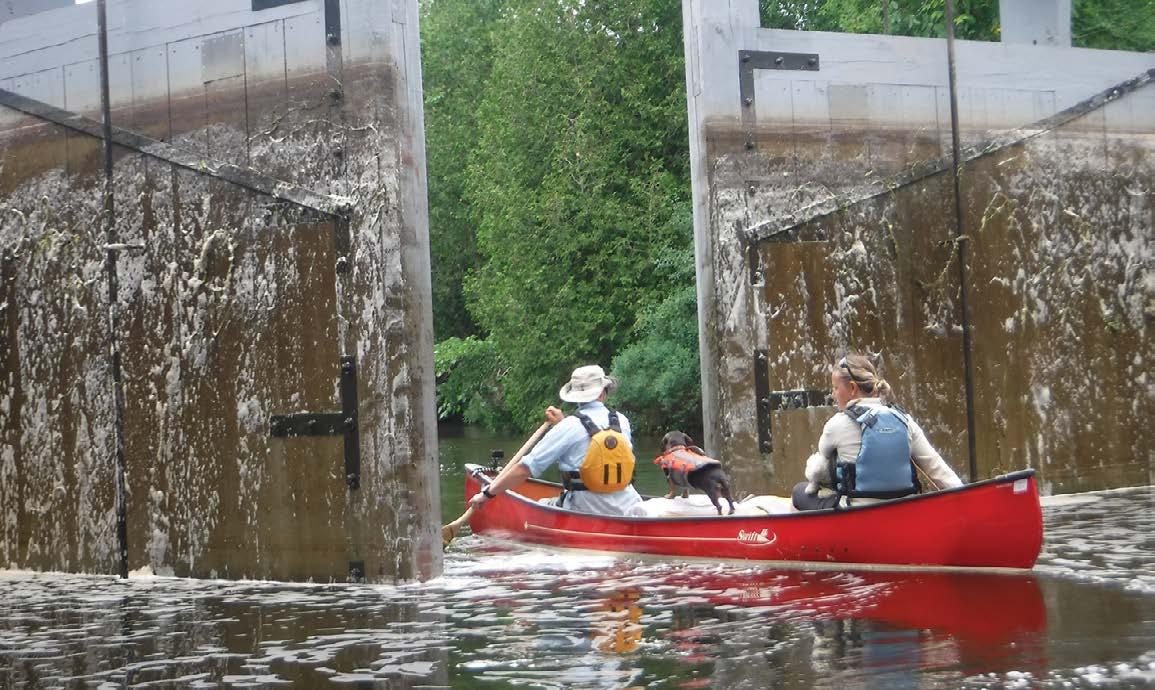
It’s been two years since I last canoed due to a necessary spinal surgery in June 2018. A few months after the surgery my husband, Marcin and I, paddled a very short 40km section of the canal knowing if I had any challenges we could abort at any time because of the proximity to civilization. We fell in love with the Canal. It’s popular with cottagers but what struck us was that the Rideau Canal is surrounded by wilderness and not row after row of cottages as we had imagined. We vowed then that we would come back!
In July of 2020, we finally tackled this quintessential Canadian canoe trip and paddled its entirety. The lure of dipping your canoe in at Kingston and walking it up from the Rideau Canal to the Parliament buildings is as Canadian as the maple leaf. In my mind it is one of the most Canadian things you can do. Although we are passionate canoeists let me reassure you, even though this is a long distance 202km or 125.5 miles trip, it’s a flat-water trip suitable for beginners with a canoe rental from an outfitter.
This old Native canoe route could be completed in three days, and by those standards we were slow. We figured with our average speed of 5-7km (3-4.5 miles) an hour for an average of 20-25km (12.5-16miles) per day, it would take us about 10 days to finish the whole trip. Along the Rideau Canal we stayed at the lock stations where you are allowed to camp for $5 CND per person. At the end of the day staff leave the washroom key so you have access. At some lock stations there are even showers.
To start the whole trip there were some logistics to manage.
Mainly, how do we leave a car in Ottawa but start in Kingston? On the morning of the start of the trip, Marcin dropped us and the gear at the beginning at the lock - Kingston Mills. He then drove two hours to Ottawa and left the truck with a friend, caught the last VIA train to Kingston and then grabbed an Uber to the first lock station so we could start nice and early at 7am. As luck would have it, we unknowingly chose one of the hottest weeks of the summer, 35C/95F.
What we most love about the Canal is every style of travel can be done along or in the waters of the Rideau Canal. The canal can be done in small or long sections. You can stay in hotels or bed & breakfasts with stops along marinas for an afternoon beverage or lunch before heading on your way. While it’s not deep in the wilderness, it has such a vastness of wilderness and civilization that it can suit absolutely anybody - not just canoeists.
With 47 locks end to end, anyone with a pass (even canoes) are allowed to use this recreational Slack Water Canal which risesintotalelevationchange273feet(83 metres) at its peek and requires 33 locks between the Ottawa River to it’s summit at Upper Rideau Lake. For a visual, think of 28 elephants standing on top of each other at the highest section, that’s a lot of elephants!
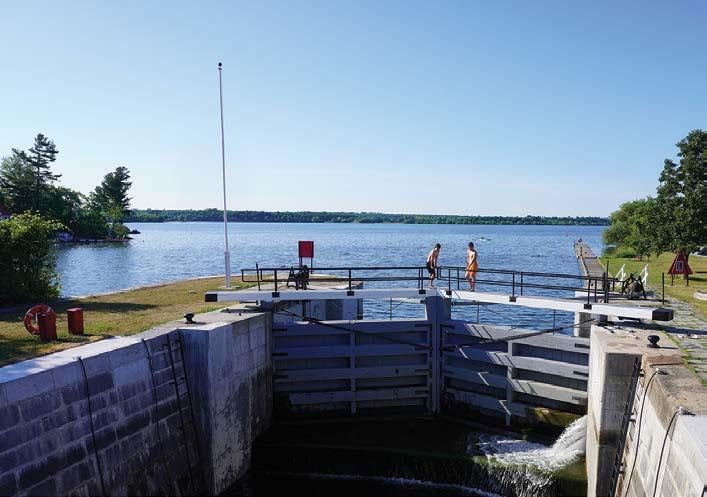
The magic of the Rideau Canal is that it’s still manually operated by hand like it was in 1832. It can take up to 4-6 people to crank those 200-year-old handles and see the water rise up or come gushing down between the lock’s doors. Surprisingly from start to finish it can take about 5-10 minutes to fill. Considering that the lock system is 188 years old, that is pretty darn quick. I had to restrain myself from taking too many pictures of the lock stations opening and closing as each one is so darn unique. As you travel along the canal you witness how the locks were built in the excavated limestone channels to overcome changes in elevation. We cannot stress enough what a thrill it is to ride the locks and see many of the original wooden lock doors open as they released or took on water.

By far, Jones Falls (locks 39-42) was our favorite lock with five elevations and

a lift of 15 feet (4.6 m). It was considered an engineering feat and dangerously high in 1832. It is also the biggest lock on the whole system. The site includes a power generation station, several buildings including a guardhouse, blacksmith’s shop, and a fish nursery for bass, perch, pike and minnow.
On the Rideau you’re going to find lots of photo opportunities. There are the historic lock stations, lovely cottages & boathouse architecture, lots of wildlife opportunities, beautiful Canadian Shield view scapes, historic villages and much more. Everyday our daily endof-day “showers” consisted of jumping into the Canal. Considering it’s such a large recreational passage, the water is clean so go ahead and dive in, we did! For the canoeing purists, stop reading here. We did the unthinkable. We skipped one of our at-home dehydrated meals, ordered pizza and beer which was delivered to our campsite. Scandalous!
Finally, there are so many historic towns along the way on the Rideau. The one that caught our attention was the unique vibrant Victorian village of Merrickville-Wolford. It has more designated heritage buildings than any other Ontario community of like-size and is just an hour south of Ottawa. It also has the cutest coffee shop with a yellow canoe out front. We now have plans to explore more of the canal by booking an RV site and re-visiting some of the towns. We are in love and we will be back!
For some extra eye candy, see our YouTube channel WeNowRV to experience the Rideau Canal from a canoe.

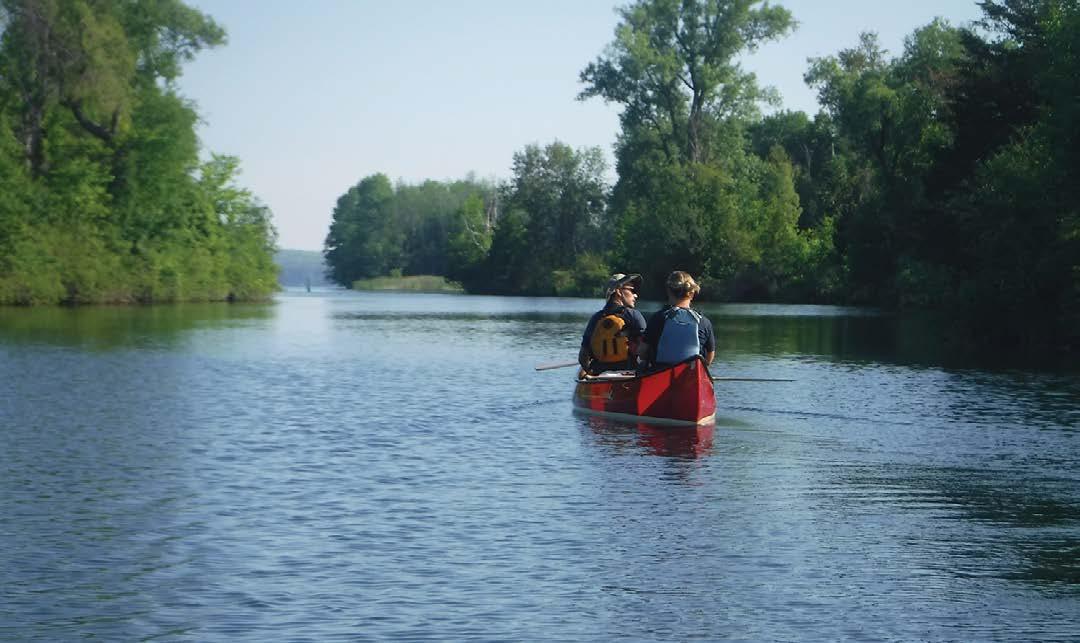
About the Author.
Agata Wisniowska is a full-time RVer traveling with her husband Marcin and two pups. When not canoeing, she works as a remote makeup artist specializing in empowering women. She teaches virtual classes showing there is so much more to makeup than just application. You can follow her on Instagram and Facebook @wenowrv or on their website at wenowrv.com.

What if I told you that your time is actually priceless? Or that more money won’t make you happier. What would you do differently in your life?
That’s the exact realization Greg and I had a few years ago. We were several years into successful careers at a great company and we were checking all of the boxes. Despite the comfortable salary and yearly vacations, our time didn’t feel like our own and we wanted something more.
We started thinking about what made us happiest and realized it wasn’t the money in our bank account. It was much simpler than that. Happiness came from quality time together doing the things we loved, like mountain biking, fishing and exploring new areas of the world. We wanted more freedom to pursue our personal passions and knew we couldn’t do that while reporting to an office every day.
Wehadthiscrazythought:Whatifwecoulddrasticallysimplify our lives to the point where we didn’t need very much money to live and travel? Could we become financially independent by simply spending less?
The first step to understanding if this was attainable was to analyze our spending. We’d never really lived on a budget, but we’re naturally frugal people. We were making decent money and hardly spending it, so our savings and retirement accounts were healthy. After looking through our monthly spending, we realized that our mortgage & utilities, vehicle insurance and monthly subscriptions (Hulu, Netflix, etc.) were well over two-thirds of our expenses.
Aside from our mortgage, we were debt free. Throughout our years of working corporate jobs, we diligently managed our finances to pay off our student loans as soon as possible. We also made a point to pay for vehicles with cash by saving up first, rather than financing through a lender. This made our road to financial freedom much easier because we were already halfway there.
Once we understood our spending habits, a nomadic lifestyle became a tangible solution to our desire for more freedom. Selling the house and moving into a converted van became our new passion project. We’d only been in our custom-built home for about two years, but we built it as an investment and the real estate market was booming. Rather than keep it as a rental and deal with the stress of being an absentee landlord, we decided to sell.
But the reality is even a much simpler lifestyle would cost money. We calculated we would need $2530k per year to travel and live in the van. This includes our groceries, gas, insurance, cell phone and a few other monthly expenses.
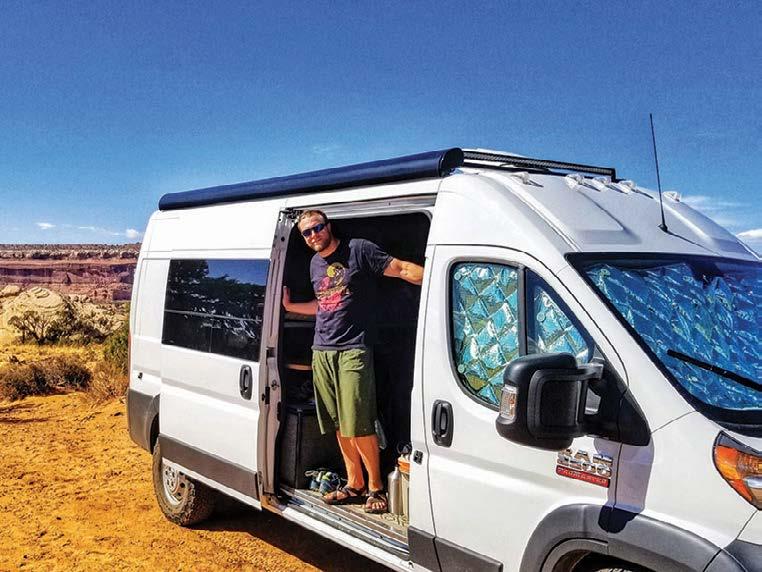

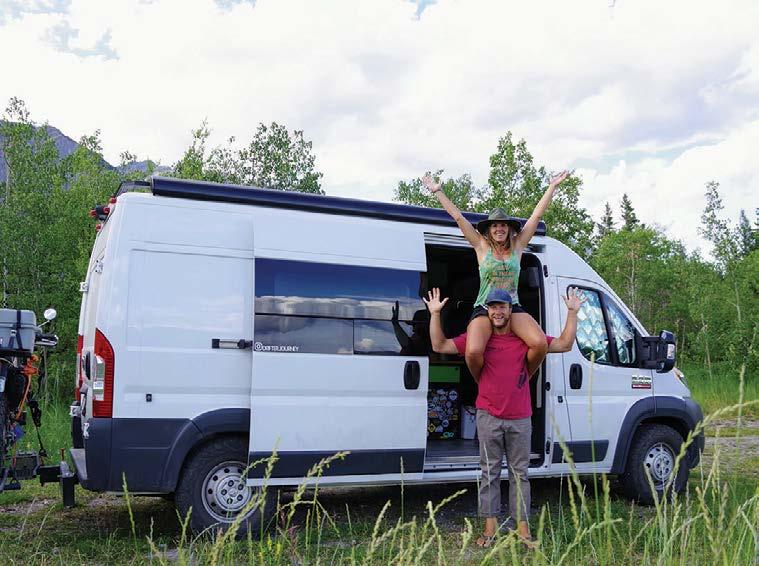
We created a spreadsheet to help us track our savings, committing to a goal of having at least two years of full time vanlife and travel expenses saved before we quit our jobs. At this point, we weren’t sure how much we would love this lifestyle. We felt better about quitting our jobs assuming we would just go back to something similar at the end of our two year adventure. In addition, we wanted to travel to Australia, New Zealand and Indonesia, so we committed to saving up for that trip as well.
Along with all of this financial planning, we were also researching vans, van conversions, and how much it would cost. Going into debt for a van was not an option, and we committed to working as long as we needed to in order to pay for the van and the conversion in cash. The day we signed the paperwork for our brand new Promaster 2500 Cargo Van was the point of no return!
Despite all of this research and planning,wewerestillquestioningour long-term financial security. Quitting our jobs and selling everything made financial sense now, but what about later? We met with a financial advisor because we wanted to make sure we had our retirement income set aside and that it would be enough to live on once we hit retirement age.
In preparation for this meeting, Greg made another spreadsheet that showed how much cash we could invest into the stock market once we sold everything. He calculated the compounding interest at 4%, 6%, 8%, and 10% so that we could see what the variance might be depending on how the market performed over time. Based on a retirement age of 65, our spreadsheet showed that we would have enough for retirement even if the market only increased 6% (which
is historically slightly below average) over the next thirty years. We showed these calculations to our financial advisor and he confirmed it was correct. He also helped us choose which mutual funds to invest in.
That final piece of advice was not only the push we needed to turn our plan into reality, but also affirmation from someone we respected that we weren’t completely crazy. We sold our house and invested our earnings. We continued working for an additional 6 months while living in the van on a friend’s farm to save the amount of money that we needed to reach our financial goals. Once we quit our jobs, we hit the road and never looked back.
Now that we are two years into vanlife, we’ve realized we love this lifestyle and want to continue for much longer than we originally anticipated and budgeted for. We work seasonal jobs in the winter in California to cover our annual costs and routinely analyze our finances to ensure we are making enough money to cover all of our spending. In addition, we continuously manage our investments to make sure we are on track to our long-term goals.

Even though we manage our finances more actively than we used to, we have a much different perception of money and success. These days our goal is to only work as much as we need to in order to sustain our simple, yet satisfying, lifestyle. Any additional money we earn gets invested to help us reach full-time retirement even sooner!
About us: We really enjoy living an alternative lifestyle, which enables us to pursue our passions for travel and outdoor adventure. Our goal is to help and inspire people to challenge the status quo and make their dreams a reality. We love meeting new people and welcome any questions you have about our lifestyle. We’re always happy to help you figure out how to make changes to live minimally and have more financial freedom.
You can learn more from us and join our adventure on Instagram @drifter.journey, YouTube @DrifterJourney, or check out our blog at drifterjourney.com.

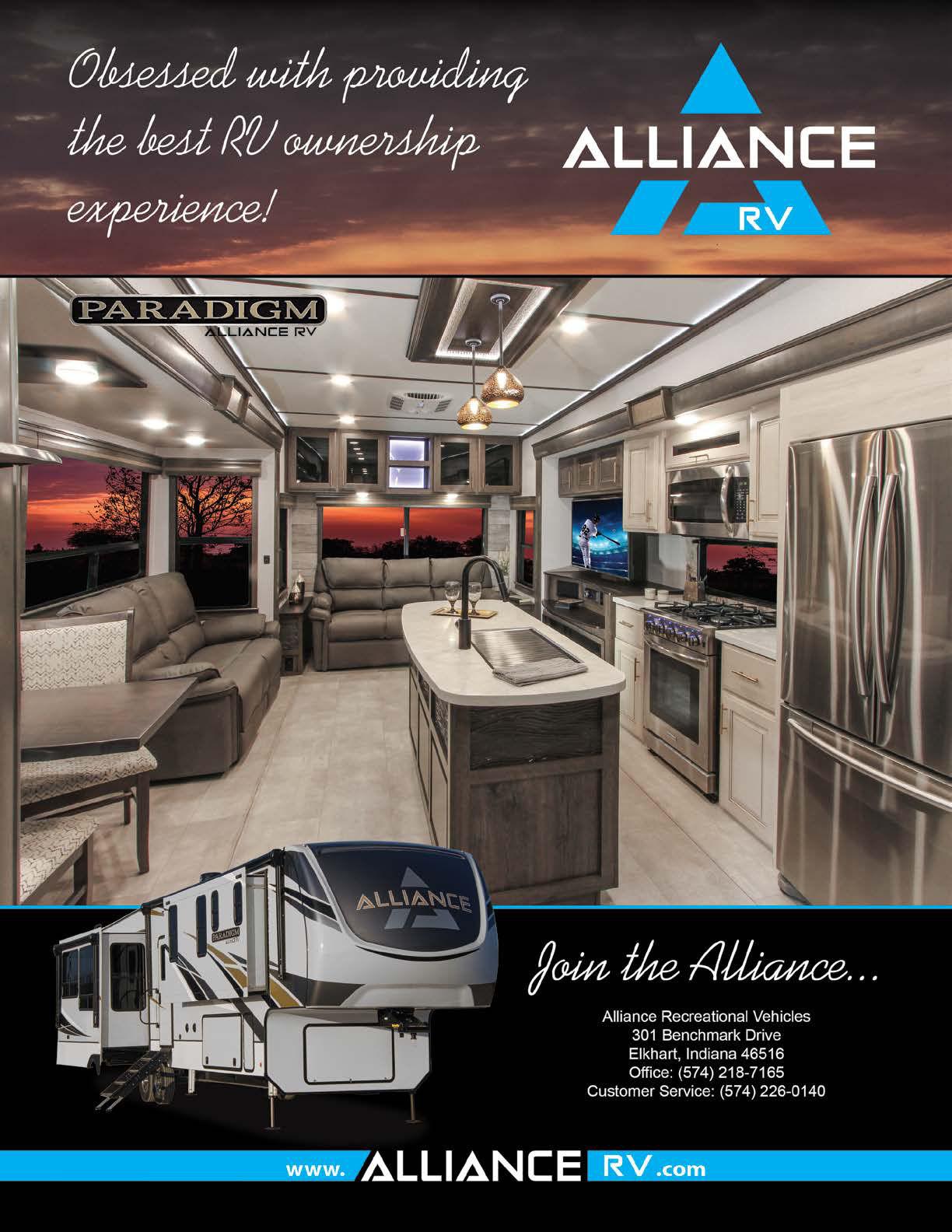
 BY CHRIS AND CHRISTI
BY CHRIS AND CHRISTI
That’s all we needed. Just one lightning Thanksgiving trip from Los Angeles to Boise in 2015 spanning five states in less than 72 hours. That’s the trip that gave us a quick taste of the nomad lifestyle. We were thirsty for a change. We had too many things and an insatiable appetite for minimalism. Who needs all those shoes and a gigantic home studio anyway?
Upon our return to the LA hustle, we were pumped, stoked, anxious and everything in between. We came strapped with a bunch of stories and smiles to share at our weekly house music gathering in Hollywood called UNITY, where we were the residents, DJs and creators. Unfortunately, the fast-paced LA life completely diminished our excitement to hit the road.
Four months later in 2016, one of our friends posted a beautifully written blog on Facebook about a family of three selling everything they had and going full-time in an RV. Needless to say, within two hours, we were already shopping for RVs. That same weekend, we visited two RV dealerships in California. Instead of simply getting a home on wheels and hitting the road, we really wanted to make it ours. Something that would really set us apart from the pack and

truly galvanize our passions into it. What would two creative DJs and music producers possibly want…That’s right, a music studio in an RV!
Our fuel for adventure was back and this time we felt it was here to stay.
Fast forward two years and a dozen dealerships and RV shows later, our wonderful home on wheels entered our lives and we finally bought it in Coeur D’Alene, Idaho, Christi’s home town. It would be totally cliché to say “the RV chose us”, but we’re gonna double down and say it even spoke to us when we first saw it. Our 26’ Fleetwood Jamboree Class C RV was literally everything we ever wanted. Even though it was much smaller than what we planned on, it still had all of the elements included from our original vision, especially since we wanted to add a fully functional music studio in there.
The cornerstone of our creative music space was made possible thanks to today’s technology. Everything is “in the box”. In other words, all sounds are emulated through computers or gear with a much smaller footprint. Helping us achieve this is the UAD Universal Apollo Twin, which is our audio interface. This amazing piece of gear allows us to
OUR FUEL FOR ADVENTURE WAS BACK AND THIS TIME WE FELT IT WAS HERE TO STAY.
record, track and even emulate those legendary physical machines such as various reverbs, pre-amps, and delays which is important for the right sound for our tracks.
A MacBook Pro powers everything up as it’s also linked to a 32” Ultra-Wide LCD monitor on a monitor lift for a comfortable experience. Our studio monitors are KRK Rokit 5’s, which have given us fantastic bass response in the RV. Finally, to round it all out, we added a few multi-use controllers such as the Arturia MiniLab and the Native Instruments Maschine
for grooves and rhythm sections. We used to be in love with buying more and more gear. Now, we’re in love with our streamlined studio.
With the important stuff out of the way, all we needed was to sketch out a few ideas that were safe from an engineering standpoint while we travel, such as ratcheting down our monitors and implementing a monitor lift for safe traveling.

Our RV remodel has been documented on our YouTube channel, which shows us getting our hands dirty and putting in the work as we progressed. We changed and rebuilt the entire interior, specifically to accommodate a quality creative space.
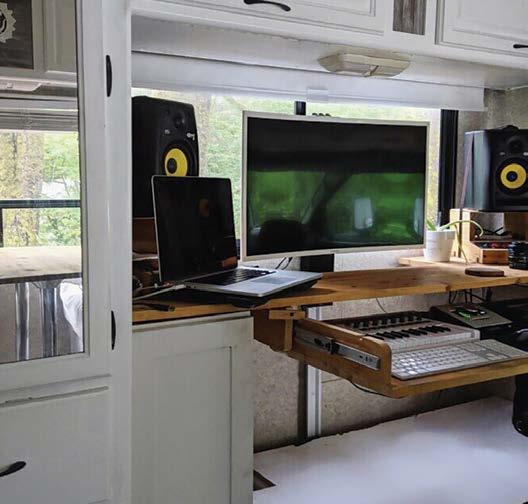
We adopted the whole minimalism concept, all the way down to the music studio so we can focus on living a creative life all while exploring various places, and really taking our time with every location. We’re not really the “runand-gun” type of adventure seekers. In fact, our mission was to have the time and space to create as much as we want, along with the inspiration of nature and an ever-changing backdrop, whether it’s by a mountain, lake, forest or ocean.
What allows us to achieve all this on the road? Well, luckily for us we laid some solid roots in LA which allowed us to fund our lifestyle. Aside from making music and gigging wherever the RV travels take us, Chris owns and operates a
few online businesses as well as offers online marketing services, while Christi is an actress and provides her voice for various voice over jobs. It’s simple and it’s allowed us to see so much. We feel like we’ve barely scratched the surface as we’ve been recently working on our channel.


We’ve never regretted the decision to transition from a traditional lifestyle to being full-time in our tiny home on wheels. We are no longer constantly slammed or bogged down by our lives being filled with “things”. We no longer have all of the stresses of maintaining a traditional home taking up most of our time.
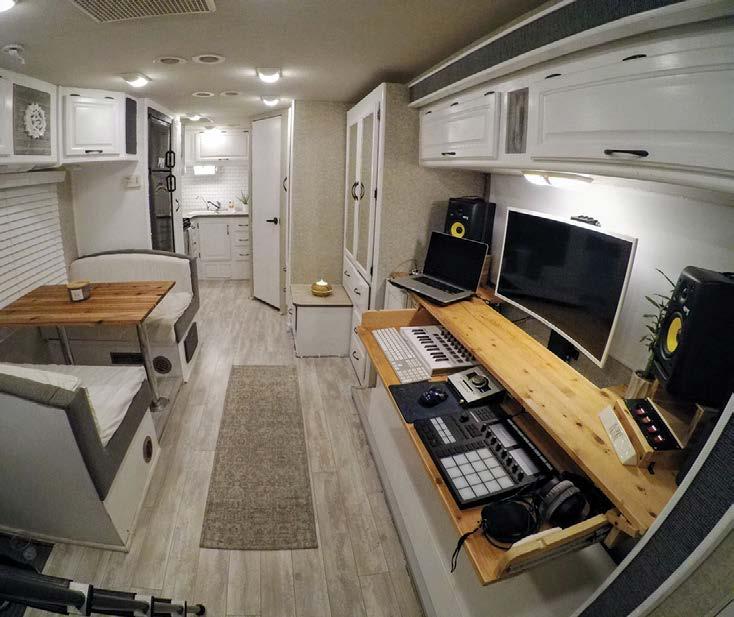

If anyone is ever thinking of doing this. Just do it. The endless inspirations and the road will be thanking you in return. Follow Chris and Christi on YouTube, Facebook or Instagram @kreativefreedom.
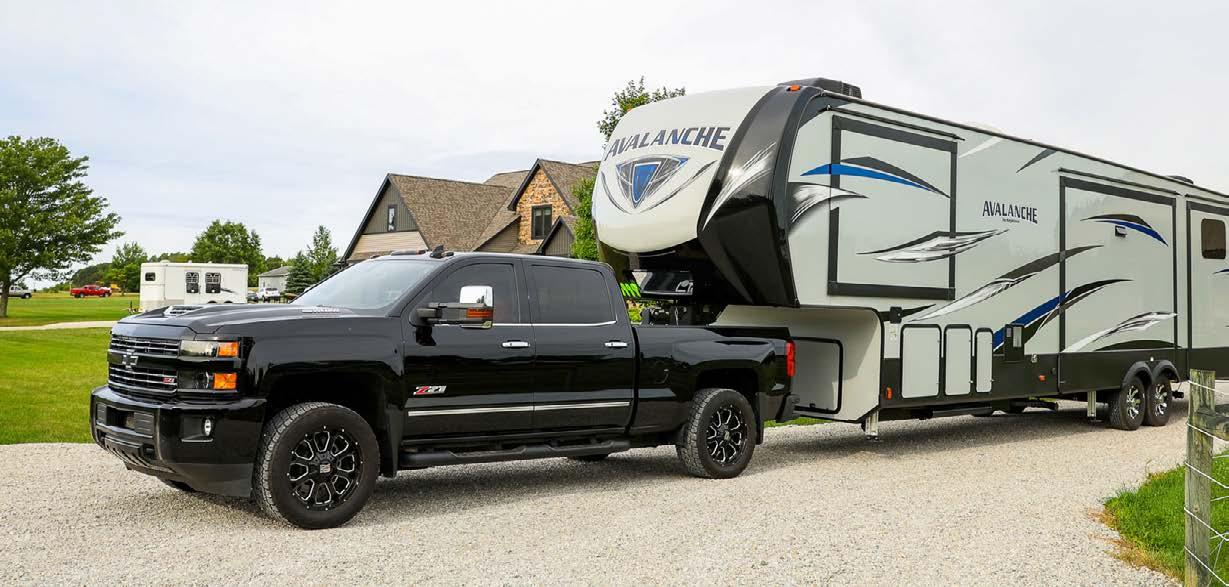
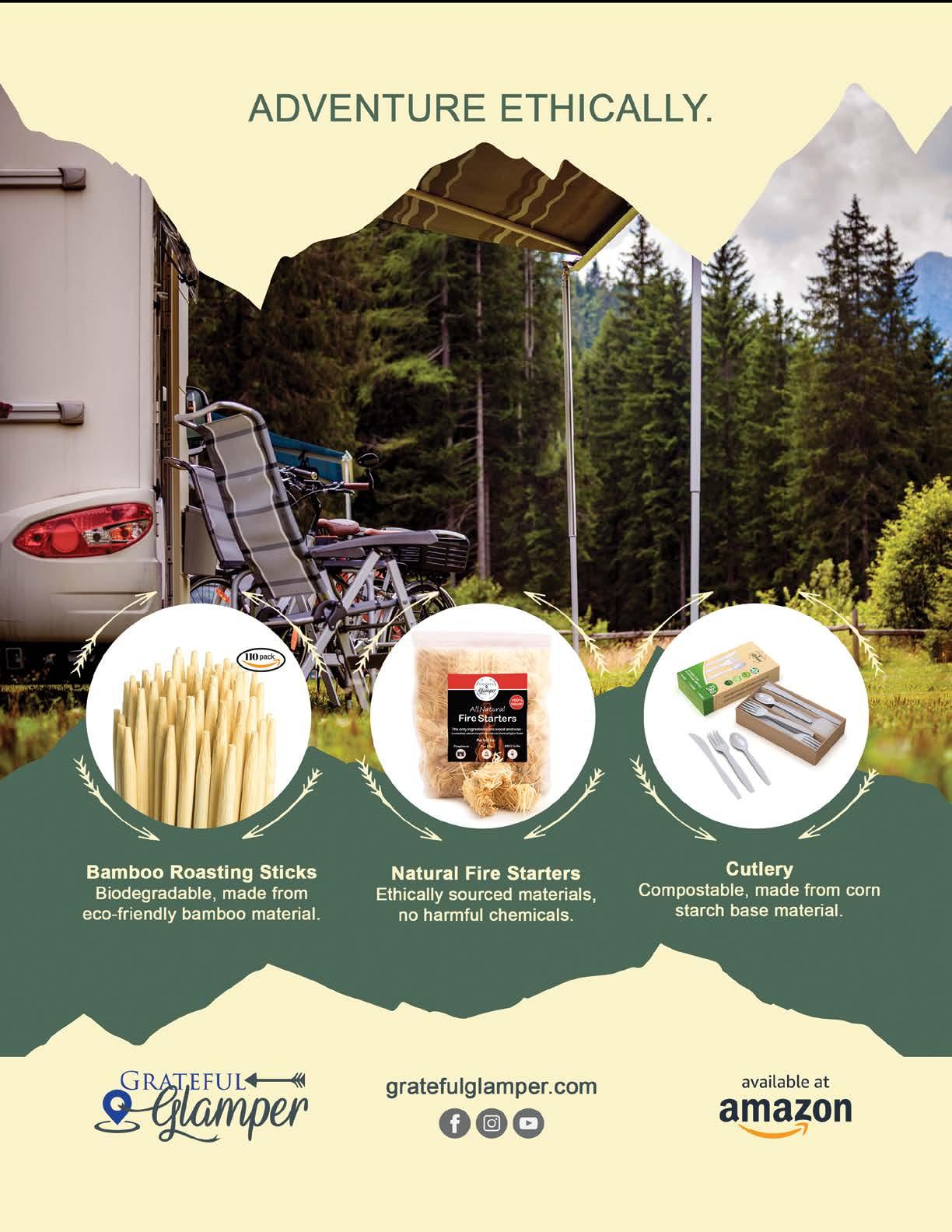

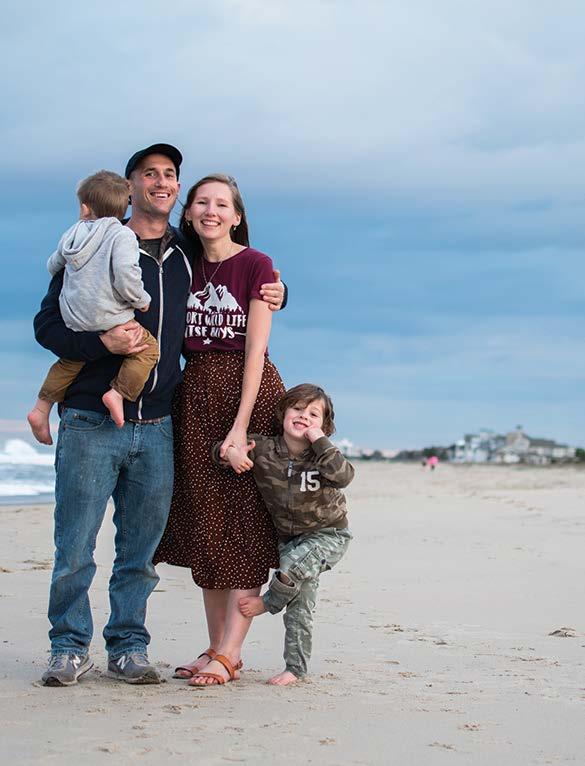 By Natalia Pollard
By Natalia Pollard
We took a trip to Transnistria back in the summer of 2018. Little did we know that trip would change our hearts and turn us into wanderlust travelers.
We are Ryan, Natalia, Benjamin & Jack. One ordinary family with not so ordinary dreams. Ryan, born and raised in Delaware, never saw himself leaving his family and home state to chase freedom and adventure. Natalia, born and raised in the country which doesn’t exist on the map, left her family and home in hopes to build a better future. Together we are a dream force! I don’t think you’ll meet bigger dreamers than us.
Struggling to fit into the society’s norms, we were always talking about our future. Delaware didn’t feel like home, it wasn’t fulfilling our wandering souls. We almost moved to Vermont, then we almost moved to North Carolina. We almost bought land, then we almost bought a house. Every one of those events fell through! We’re big believers that everything happens for a reason and while it was hard to see in the moment, we’re so glad we didn’t get a chance to put down roots.
There was a time we had to make a family emergency trip to Transnistria. It was eye opening for us. Especially for Ryan who was born in America. Transnistria is a small region which still resembles the Soviet Union and life is different there. Getting to experience a month of “different” life outside of the United States made us crave more life together when we got back home. So, one day Ryan said “Would you ever live in an RV and travel across the United States?” To which I said “Yes, when do we start?”
Our dream and plan was born that night. We wrote it down, we talked about it, we rough drafted it, it was going to be epic. It felt like “us” to the core! I think a lot of families start out this way. Later on, we found out there is a huge community of RVers out there and we wanted to be a part of it.
There were so many questions and unknowns as to how to start making this dream a reality, we’ve never even stayed in an RV before! Let alone dragging our two small children along with us. But the best way to do something is to do it. So, we chose a departure date a year out and said “May 2020 or bust!”

People always ask us how we got started and we tell them the very first thing you should do when following ANY dream is to set a date! Set a date and the rest will follow! And it did for us.
At the time we were living in a three-story townhome and spending all of our money on bills. We couldn’t pull off this dream if we didn’t start downsizing and budgeting, so we decided to move out right away and move to an apartment that was way cheaper and way smaller! It was a huge bonus that the apartment was only two blocks away from the beach! Talk about starting an adventure before an adventure. We spent the next seven months at the beach preparing for our
big move. Things started falling into place one by one. We got our travel trailer the day after Christmas, it was a long search for that diamond in the rough.
That’s another piece of advice for anyone starting out - don’t rush into buying all the pieces of “the puzzle”, but rather wait for the right one to come around. I think this sounds a bit cheesy but it’s true.
Around this time, we also started sharing our adventures on Instagram and YouTube and This Adventure Family was born. We wanted to inspire others to start living their lives to the fullest. It’s a passion of ours - documenting our memories. They’re priceless to us, and if these little snippets of our crazy life could inspire just one person then we succeeded!
By the time May rolled around we had almost everything figured out, except one thing - the truck that would tow our home. Working with a tiny budget, we had a really hard time finding the right truck. Believe it or not, we bought a truck the week before our departure and hadn’t towed our home until the night before we left. We took it around the block and all went well. The next day we were off to chase our dream. Total newbies, totally head over heels excited.
Living in a 26’ travel trailer has brought us all that much closer.
WE ARE NOT PUTTING A TIME FRAME ON HOW LONG WE WILL DO THIS, JUST LEAVING IT UP IN THE AIR FOR NOW AND SEEING WHERE THIS GREAT BIG ADVENTURE TAKES US.
We love it, together is our favorite place to be. There are daily challenges, of course, but this lifestyle is so rewarding in a very unique way. We have come to love boondocking! There’s something about being in remote places surrounded by beautiful nature, it’s so freeing.
Our boys have been troopers too. They are two and four, and both have had their own little challenges adjusting to the new lifestyle. We are so proud of the way they are handling everything. Benjamin is our bright ray of sunshine, if you get a chance to meet him, he will definitely invite you to his birthday. Jack is our brave little lion and he gives the best hugs. They are a perfect duo.
We are not putting a time frame on how long we will do this, just leaving it up in the air for nowandseeingwherethisgreatbigadventure takes us. So far, it’s taken us to some pretty cool places where we’ve laughed together, held hands, carried our boys through the summer heat, ate too many s’mores, swam in lakes on top of mountains and watched the storms roll in. Together.
YoucanfollowRyan,Natalia,Benjamin&Jack on their journey on Instagram, Facebook, and YouTube @thisadventurefamily and find their blog at thisadventurefamily.com.
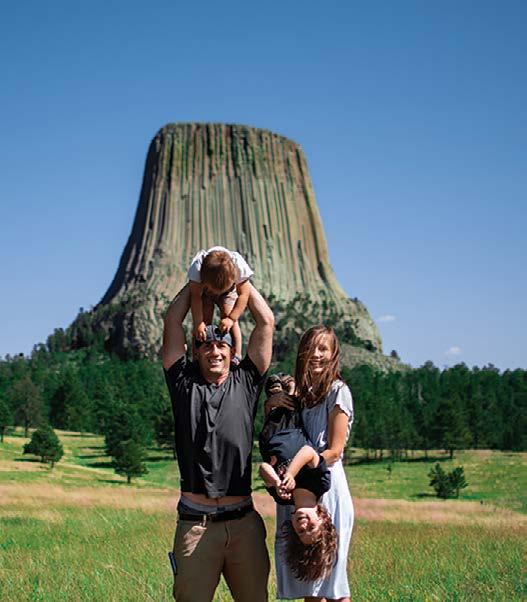


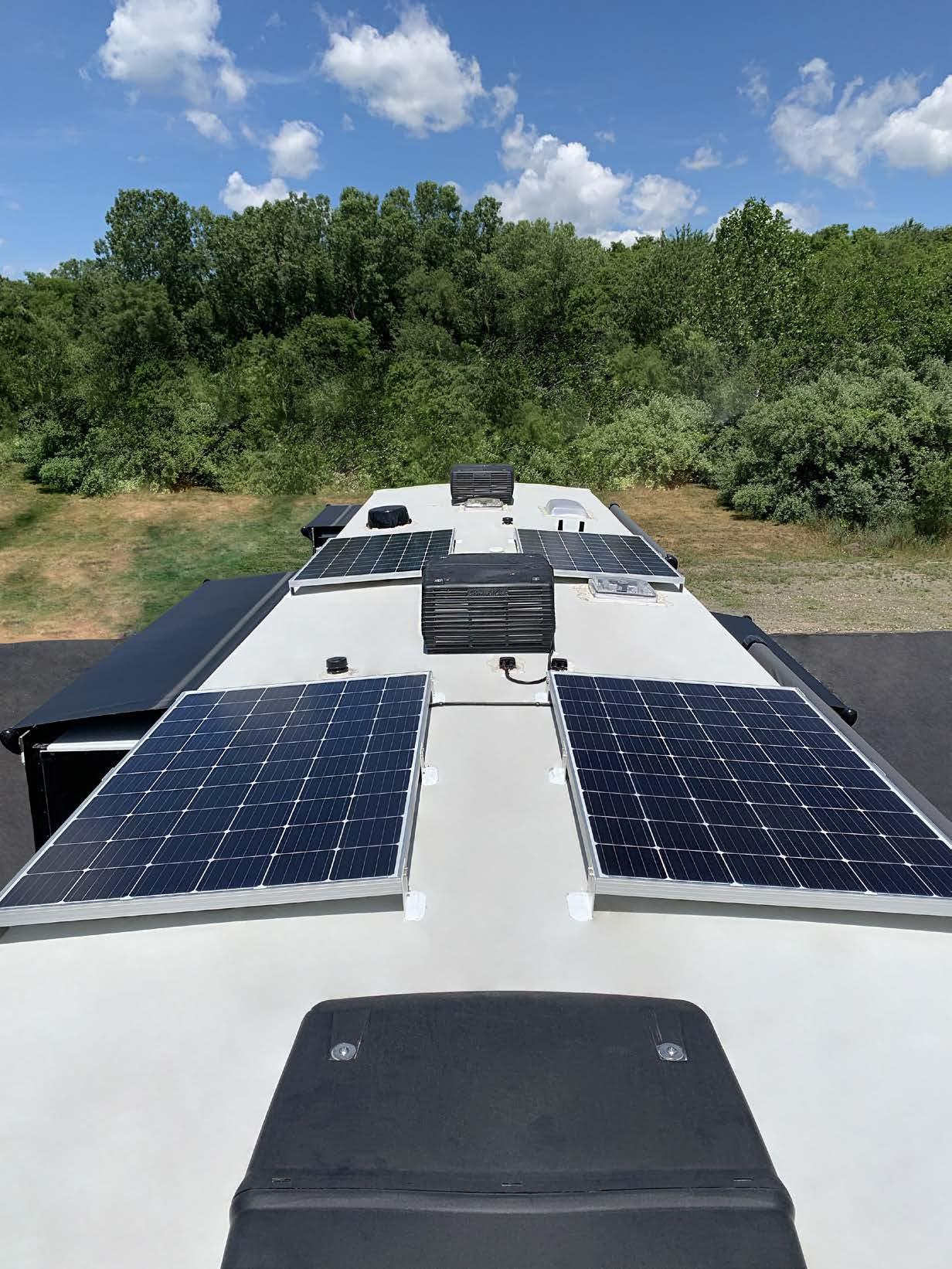
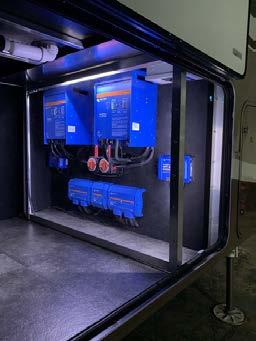
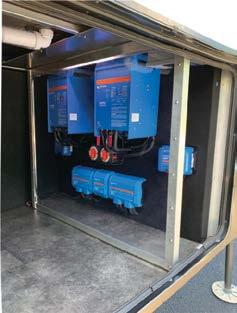
“I can’t believe we get to live here.” The words slipped from my lips the other night while standing on top of Cadillac Mountain in Acadia National Park watching the sun set over islands, mountains and ocean waves. When darkness came, we hopped into our truck for the short drive back to our Airstream, put our boys to bed, and drifted off to sleep with hearts full of wonder. While this might happen once in a lifetime for most people, as full-time travelers working near Acadia for the summer, we get to experience it as often as we like all summer long, and we’re beyond grateful.
If you had asked us about our full-time travels last summer though,thiswouldnothavebeenourstory.Ourcircumstances were the same – living by Acadia in our Airstream for the summer – but our hearts were not as full. We were too busy itching for more. After six years of traveling full-time around the U.S., we were anxious to have a new kind of adventure and looking for a big change.
Many people call families like ours change-junkies, and we can’t deny the label. It’s one we’ve carried for over 16 years.
Shortly after getting married and having our first baby in 2005, we packed our belongings into five suitcases and
moved across the globe to live in Sydney, Australia. A year and a half later, with another baby in tow, we moved back to the States and tried to settle down. Five years and three moves after that, we gave into our travel bug and bought our first RV, determined to try full-time travel.
Prettyquicklyafterhittingtheroad, weknewwehadfoundour thing, and we loved exploring national parks, boondocking, and crisscrossing the nation with every bone in our bodies ... until we heard about the families living on boats.
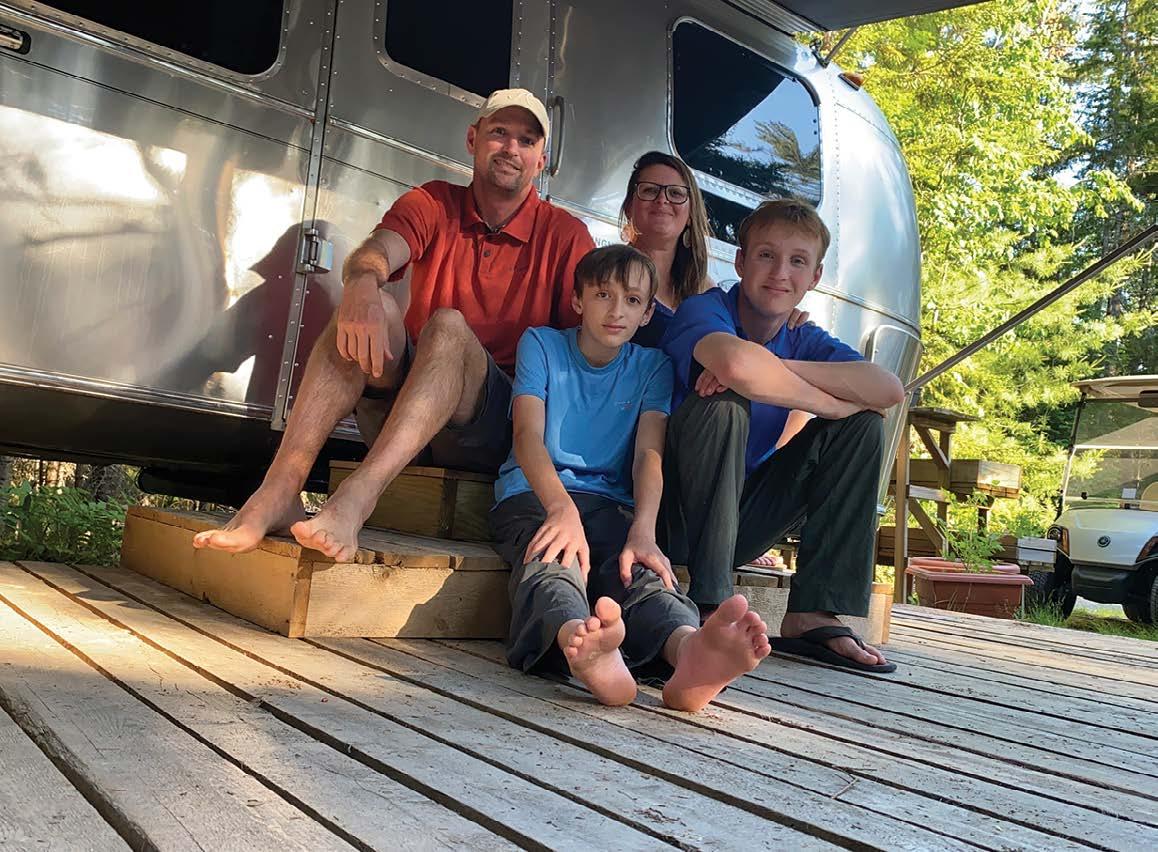
“That’s it – that’s our next thing,” we thought, and we started making plans to transition from full-time camping to fulltime sailing. Three years of dreaming and planning later, we purchased a Lagoon 380 S2 catamaran and put our Airstream in storage.
Just a couple of weeks after moving aboard, though, we knew we had made a big mistake.
Our years of full-time travel by camper had taught us that nothing is as easy as it seems on YouTube, so we were prepared for hard work. What we weren’t prepared for was a health challenge that meant surgery, recovery time, and
emotional strain – a reality far from the boat life we’d been dreaming of.
When my husband found out he’d need surgery just a few weeks after moving aboard, we started feeling shaky about our plans. When he had the surgery, spent a couple of weeks recovering, and went back to the hard work of getting the boat ready to set sail, we were officially unsure. Then, during our first five-day sailing trip to the Florida Keys, he still wasn’t feeling his best, we knew the timing wasn’t right for this dream.
Plenty of families overcome greater obstacles than these to live their dreams, but for us, we knew it wasn’t right.
So, we stepped back, sold the boat, and decided to go back to the full-time camping lifestyle we once loved. We were embarrassed to have failed, sad the dream was over, and nervous about facing the people who doubted us all along, but we decided we could be thankful for the experience and everything it taught us.


While some might leave an experience like that wishing they could go back in time and stop their former selves from making the mistake, we don’t feel that way at all.
We knew we would have never forgiven ourselves if we hadn’t tried it, and now that we know it’s not right for us, we’re a lot more thankful for what we have – a tiny home, a healthy family, a big backyard and endless possibilities.
We know the key to loving our traveling lifestyle is finding what works for our family. Not what people say is great on Instagram or YouTube, not what works for our friends or doesn’t make our family go crazy; it’s about finding our own thing.
Our wanderlust is still intact. I feel it every time someone mentions living in Paris or heading Down Under; I see it in my son’s eyes when he sees photos of Greece and in my husband’s smile when someone mentions New Zealand. But I also know we need a home base right now, and we need to be close to medical facilities for the next few years. That doesn’t mean we aren’t travelers or adventurers, fulltimers, or whatever label we used to embrace. We know this traveling lifestyle is not all or nothing; for us, it’s about the long game – the memories we’re making, the adventures we’ll never forget, and the people we meet along the way.
When someone asks us about our traveling lifestyle, we’re quick to say that we’ve chased family togetherness through travel and found it but that doesn’t mean everyone needs to do it that way. We tried boat life and promptly came back to our Airstream more in love with camping than ever, but that doesn’t mean it’s for every family.

Traveling full-time for the past 7 years has done so much for my family. It has taught us that life doesn’t have to be controlled by work schedules, that togetherness can mean all sorts of things, and that we can find our true passions much more easily when we’re away from traditional life. We’ll never forget these years of chasing togetherness, never forget that time we moved onto a boat, and we’ll always hold onto these years we’ve spent with our kids and each other in some of the most breathtaking places on the planet. For me that makes for an adventure, even in the face of failure.
Celeste Orr spends summers in her Airstream near Acadia National Park in Maine with her husband Matthew and their two boys Elijah and Malachi. She writes about chasing family togetherness and going after big dreams at togethernessredefined.com. She’s the author of Togetherness Redefined: Finding a Different Kind of Family Togetherness. You can find her on Instagram @celeste__orr.


There is something magical about taking a recreational vehicle and transforming into a home.

On a recent visit to the RV Hall of Fame and Museum in Elkhart, Indiana we noticed a trend with older RVs. They all had furniture and fixtures you would’ve found in a traditional home at the time. It makes sense as there wasn’t RV specific furniture or fixtures back then.
Today we find ourselves going back to what started the modern RV industry. Milo Miller, a traveling salesman, created one of the first travel trailers so he would no longer have to leave his family behind while working.
More and more, people are saying goodbye to their ‘traditional’ home and trading them in for wheels. In the process these RVs are getting some much needed upgrades. Everything from a simple facelift with paint to entire gut jobs, stripping RV’s down to their frames and rebuilding into an after you wouldn’t recognize.
No matter what or where you call home, you’ve likely created a space as comforting and unique as you and your lifestyle. We are excited to share with you a little more about how digital nomads, RVers and the companies who cater to them, are transforming these homes on wheels.
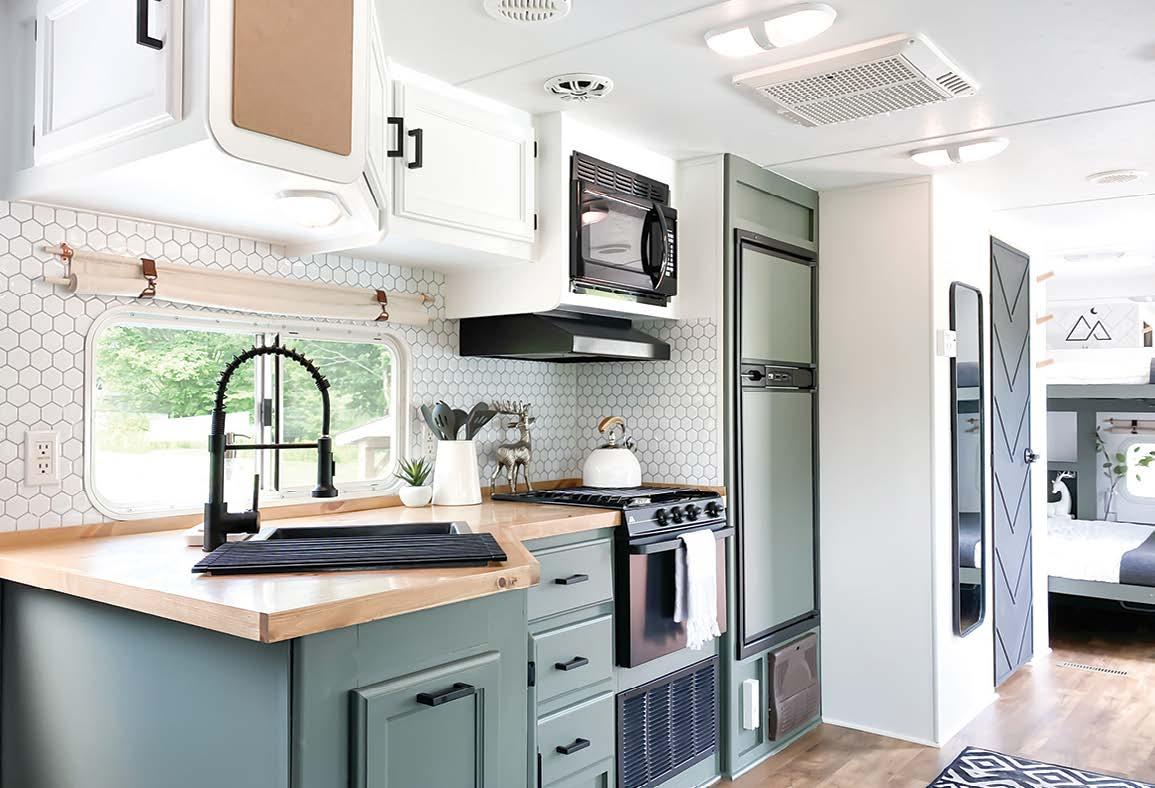
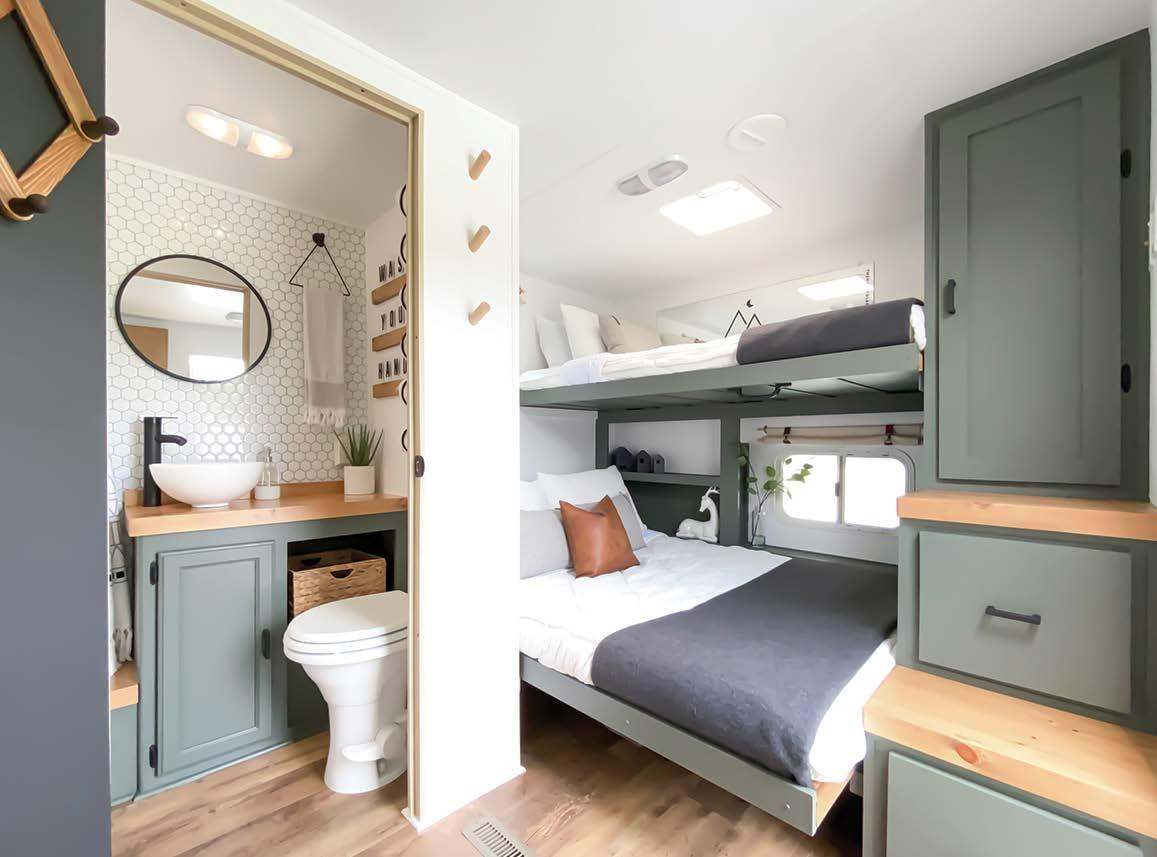
Growing up Kelsey Cahill spent a lot of time at her grandparents’ house where her grandfather was an avid woodworker who was always crafting a new intriguing piece. As a kid she was drawn to woodworking but it wasn’t until she made the decision to get a dog that she really got into woodworking herself.
Kelsey graduated from college in 2012 with a Bachelor of Fine Arts degree in Communication Design with the concentrations of Graphic Design and Interactive Design. A year later, when she decided to get a dog, she knew she’d need to build a dog house for it to stay in while she was at work. While looking on Craigslist, she came across a listing from an older gentleman selling his entire woodshop for $500. “It was a deal I couldn’t pass up. I bought everything and immediately headed to the lumber yard to get started on a dog house.” Kelsey said.
“A couple months later I rescued Barley from a kill shelter. Long story short, I can thank my Husky mix for lighting the fire to start woodworking.” Since that first build, she has continued to hone her skills by tackling a variety of woodworking projects from furniture to home renovations. Kelsey always dreamed of buying a fixer upper she could completely renovate and rent out as a vacation rental. However, because she still works a fulltime job as well as owning her own graphic design business, she didn’t want to spend a lot of time traveling from her house to the rental property in order to do the renovations.
Onatripoutwest,herboyfriendBryanmade a comment that sparked the idea, “What if I renovate an RV and rent it?” It turned out to be the perfect idea. Now she could do all the renovations at home and when it came


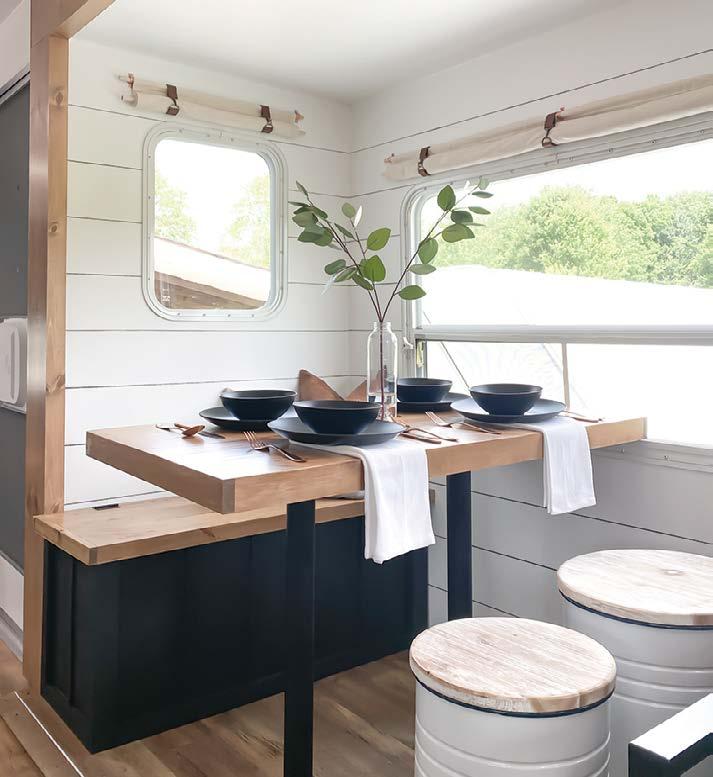
time to rent it, people would have to come to her. After arriving home from that trip, Kelsey spent three months searching every morning and evening for the perfect RV.
In November of 2019, she found the one, a 2005 Keystone Hornet Sport 30 BHSS, and she began renovating. “Little did I know when I purchased my home in 2015, that having a massive driveway and multiple garages would be exactly what I needed for the camper renovation.” Since she’s still working full-time, Kelsey could only dedicate weekends to working on the camper.

She pulled inspiration from different sources and reworked it to fit her own design style. Her overall style is very clean and modern, for this trailer though, she wanted to push herself out of her comfort zone and incorporate more bold colors and contrast. Interestingly, she started with her branding and logo before she ever started renovating and it really helped with the interior design direction.

Growing up, her family built their entire home. When she and her two brothers would get home from school every day, they helped their dad build the house. “During that time, I was exposed to a lot. From slinging blocks for the foundation, running electric and plumbing, to doing all the interior finish work like sheetrock and trim. That really helped me have the confidence to tackle this renovation on my own.
“I learned at a young age, everything in the construction world isn’t all that difficult once you understand how to do it and the big picture.” She started by completely gutting the camper. While all plumbing, electrical, and kitchen cabinets stayed, she removed all the flooring, slide out cabinets and closets. “When I purchased the camper, I was aware of water damage, but not to what extent.” She began removing items to uncover all the damage and then made sure it was properly fixed. “I wasn’t going to spend all the time renovating a camper for it to not be structurally sound.”
Once the water damage was repaired, she began painting. Fortunately, or
unfortunately, depending on how much you enjoy painting, about 90% of an RV renovation comes down to painting. “I’m not the biggest fan of painting, so other than that, the whole process was fun. The demo phase took longer than I was anticipating because the manufacturers screw and staple everything in so well that it could fall off a cliff and still be held together!”
The best part Kelsey says, was when she finally got to the stage where she could start rebuilding. She enjoyed coming up with solutions to maximize every inch of space. Kelsey installed new flooring, built the countertops, tv console, and bunkhouse closet. “These were all custom built specifically for my model.” The entire renovation has taken eight months, but that’s only working on it about 2-3 weekends a month.
There is one lesson she says she’ll never learn “to not leave paint cans or trays on the floor when painting with dogs around.” She has two dogs, one a husky mix and an outdoor dog and the other, a Silver Lab who does not leave her side. With the lab less than two feet away at all times, he manages to always get in some sort of paint accident. Leaving either paw prints everywhere, or a dog covered in paint.
While she tackled this whole renovation by herself, she is thankful to have her family and boyfriendaroundtoanswer any questions that arise. She also recruited Bryan to do some minor electrical work noting “I’m capable of doing electrical, however, I just prefer not to.”
Kelsey is sharing all her renovation advice and tips on her website, like DIY roll up curtains, how to install flooring, and even woodworking plans to build your own RV items. You can check out Kelsey’s original mood board for the Hornet and how it’s reflected in the trailer today at cahillscreative.com/ work/the-happy-glamper-co.
This trailer is avalable to rent! Visit thehappyglamper.co for more details and follow Kelsey and her next designs on Instagram at @thehappyglamperco.

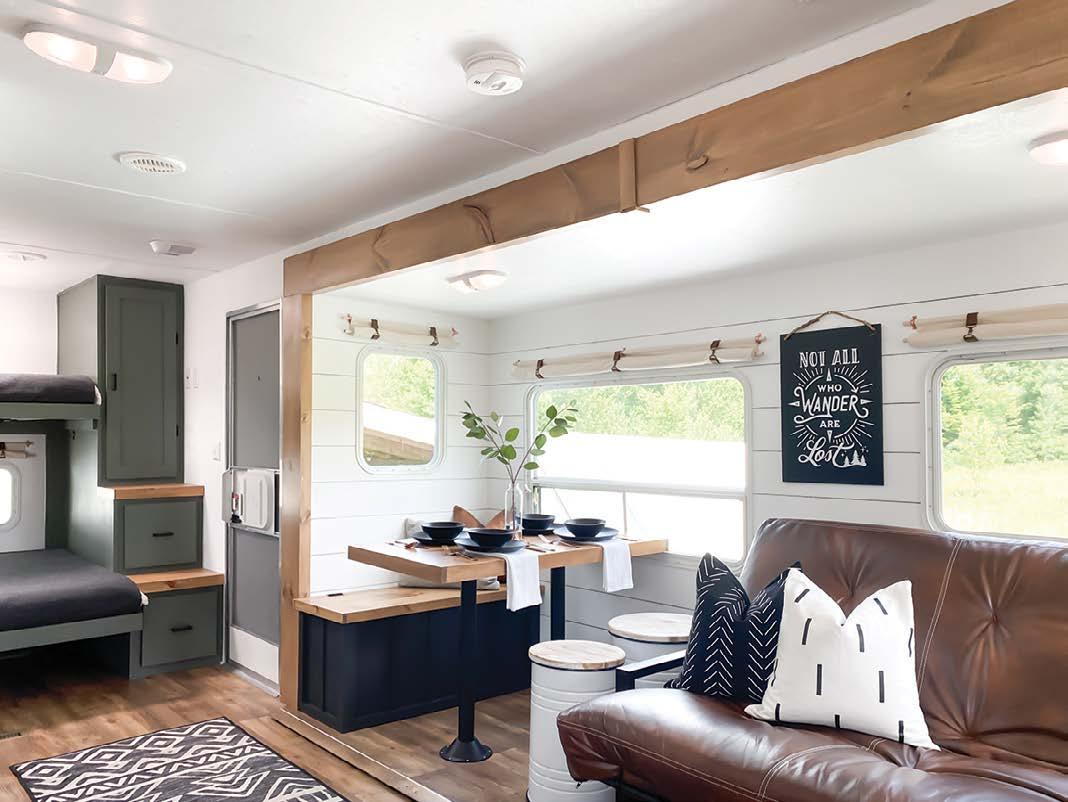



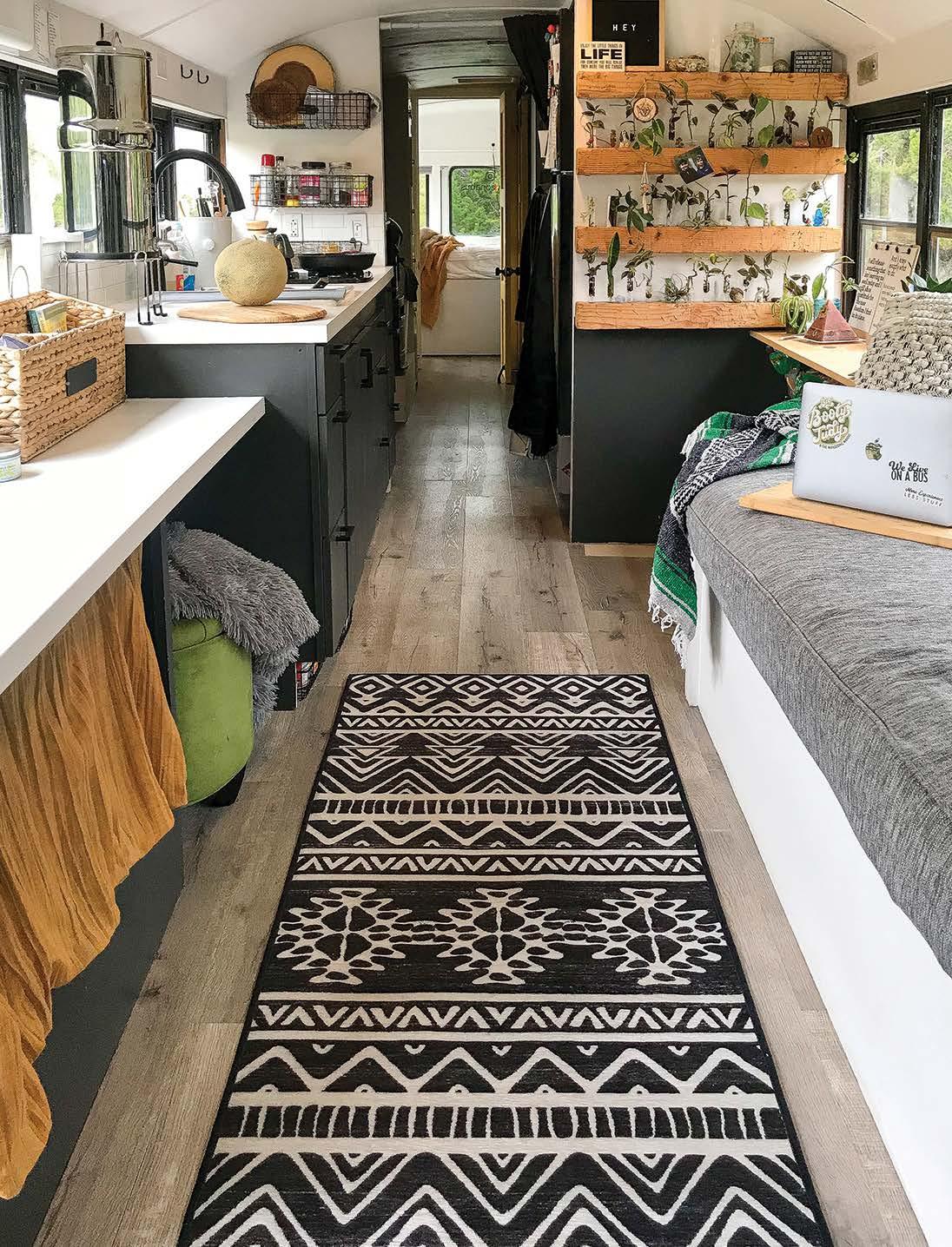
After 10 years in our sticks and bricks home, we found ourselves stuck in a cycle. We couldn’t decide if we needed a bigger home or less stuff. This resulted in hauling off the most offensive piles of clutter to be donated while simultaneously browsing listings for larger homes. We donated a lot of items over the last few years of living in that home, but we never actually stepped foot into a new house. Something deep inside us knew the answer and we always pursued less stuff as our solution. It would take a long time to recognize this cycle and what the ultimate solution was for our family.
BY TINA WANNIn 2016, we gifted our boys a trip to Washington DC for Christmas instead of filling our home with piles of gifts. My youngest stood in front of the Declaration of Independence with tears in his eyes and proclaimed that we live in an amazing country. He was seven years old. Even the security guard choked up in that moment and our desire to show them everything this country had to offer was born. Holidays transformed into gifting experiences over things and the seed of “more travel” had been planted. This, combined with our internal instinct to purge, made it easy for us to see why so many people chose tiny living and nomadic living.
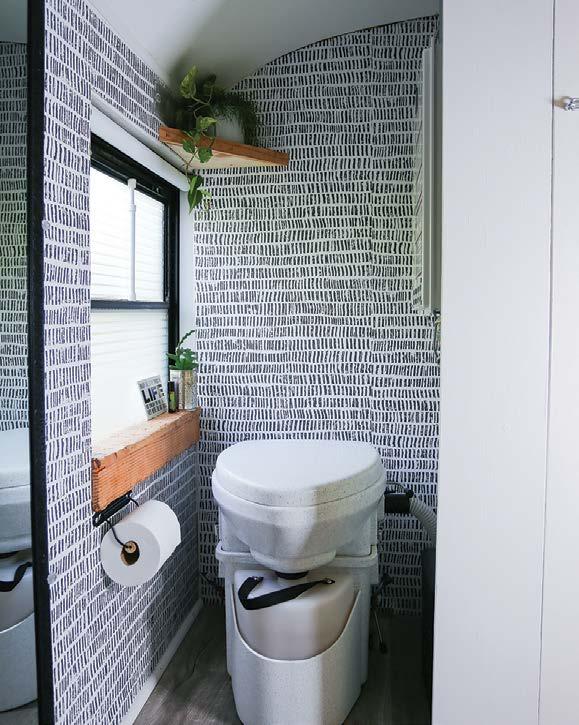
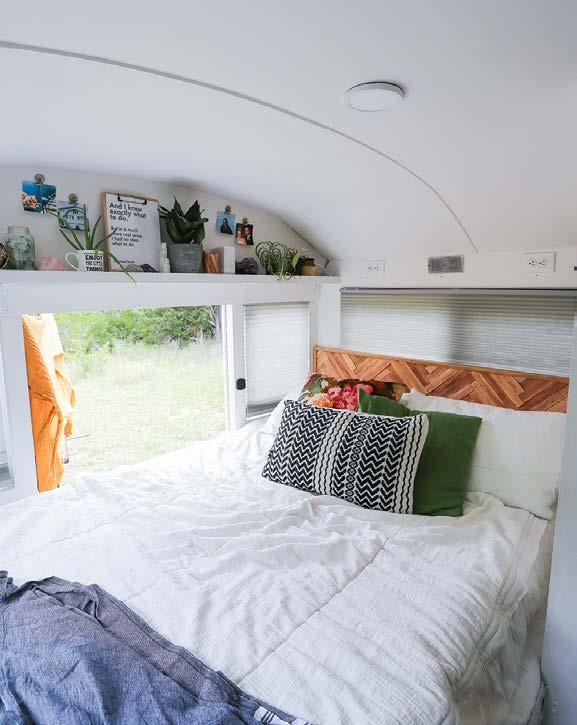
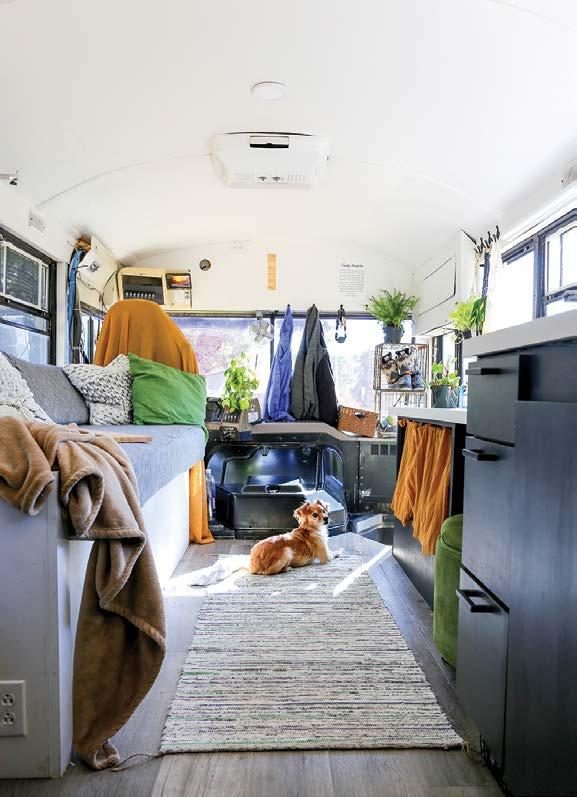

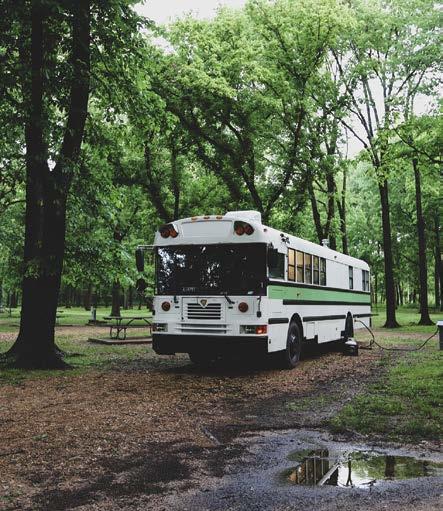
In May 2017, we decided to live in a school bus. From that moment on, we woke up every day and said, “we’re leaving tomorrow”. We pretended bus life was just over the horizon. This determined every decision we made and became the thing we said to keep each other accountable. We purged anything that wouldn’t fit in a school bus, put our house up for sale, and rehomed sentimental items to people who appreciated them. We didn’t even own a school bus yet, but we pretended as if the dream was just a day away.
Even though we knew deep inside that we never needed more home, it was now undeniable. The more we ditched, the more we fell in love with our house again. Cooking and cleaning took less time because we weren’t fighting with overstuffed drawers and digging for things we lost in closets that were spilling over. The house had never been too small.
Second, we recognized bad habits that kept creating this cycle of buying too much, getting frustrated with the clutter, and clearing out enough to feel like we could breathe again. We weren’t trying to keep up with the Joneses. We were saving things for “one day” or “just in case”. Incomplete projects and unopened toys were put in the garage for “one day”. We shoved dehydrators and other kitchen gadgets in the back of a closet “just in case” we got around to using them. All of those items added up fast.
The other space hogs in our situation were sentimental items. We piled photo albums, family quilts, and knick-knacks in the dining room and the pile could have filled up half the bus. The past was weighing us down. We kept those things to remember old times, but only looked at them when we needed to reorganize the closet so we could add more memories or gadgets to the collection.
Whilewebrokedownthelifewebuiltandsolditoff,someone else began building our skoolie. For us, hiring someone to do the rough-in for our bus conversion made the most sense. We didn’t have property to complete the build and we needed time to build online income. Chris needed to continue working while we figured out the income and his schedule didn’t leave much time to convert a bus.
After several delays, we moved in during early spring in 2019. It was still a construction zone, but we were grateful to finally be in our home on wheels. We were only in the bus for a couple of months when we discovered the engine needed to be rebuilt. This put us out of our home for three months. During that time, we wondered if we made the right decision. We had thrown away a very stable life and traded it in for a set of problems we had never experienced. We spent that time staying with family and tent camping in Colorado. We learned we needed even less than we thought since we were forced to fit everything we really needed in the back of our Jeep. Altogether, it took a year to complete all of the projects in our home.
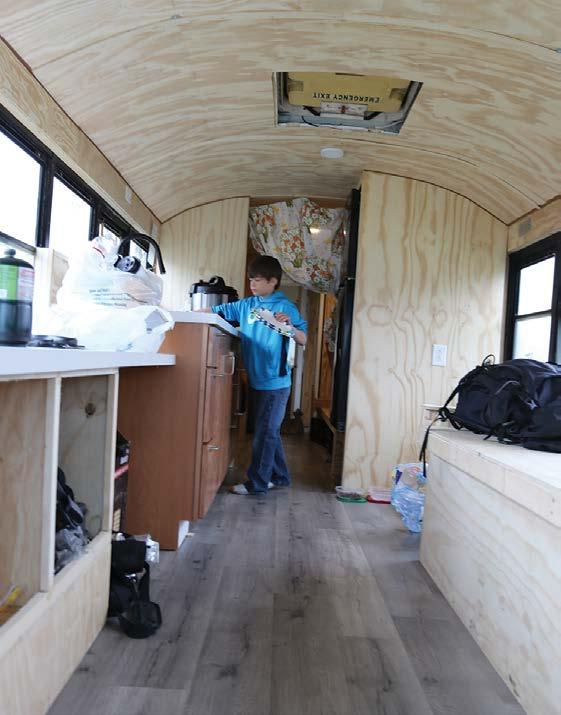
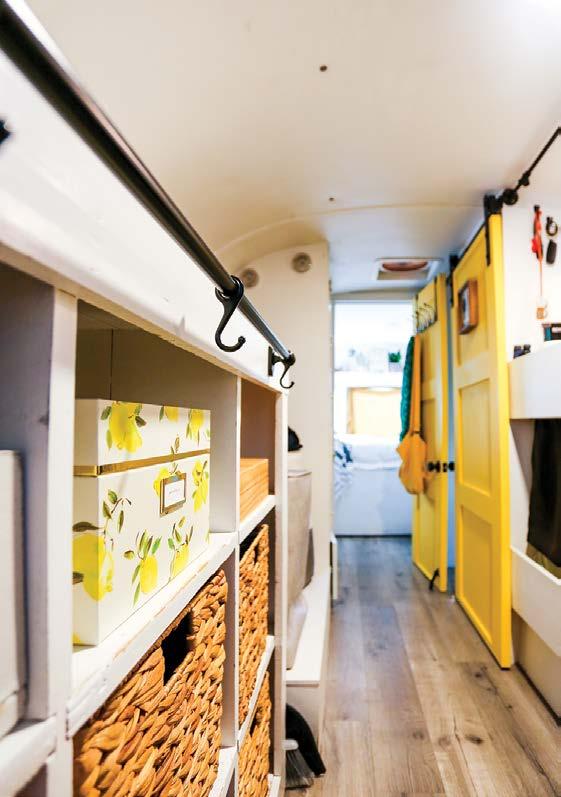
Our bus, Big Booty Judy, is now with solar, a generator, a diesel heater, and composting toilet. This allows us to live off grid, minimize our bills, and enjoy places we would have just passed along the way to a vacation spot in our old life. We made the most of every inch of storage, but now we store things that we use in the bus and we store memories on a private Instagram account. I’m so thankful we realized less stuff was the solution that spoke to us and we discovered the joy that travel really brought our family.
One of the things people most often say to us is that they could never live tiny. They have too much stuff. This year, I published an ebook that shows exactly how we manage to fit our entire life into 234 Square Feet. It is available on our web site weliveonabus.com. My hope is that it makes this lifestyle a reality for someone who reads it. We aren’t different from them. We just woke up and pretended that we were one day away from living our dream of the nomadic bus life.
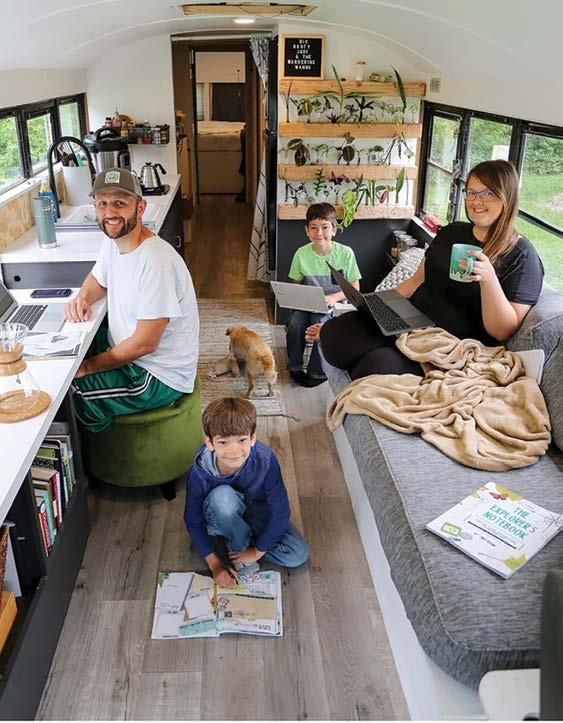

Tina Wann and her family travel the United States in their 2005 International school bus called Big Booty Judy. Two years before they began nomadic living, Tina decided she wanted to find a way to use all of her hobbies to make money. Her love of writing, photography, and building community made social media an easy choice. This goal led to the publication of a travel journal, an ebook on tiny living storage, influencer marketing, and monetizing their travel blog. Follow along at @weliveonabus.
When Bree was a sophomore in college, they became interested in tiny living. “My best friends used to talk about buying tiny houses and parking them together when we graduated.” After a couple years of paying rent post-grad, they decided it was time for something different. Bree looked into tiny houses but knew it would be out of their price range. Then they looked into a van, a skoolie, and finally an RV.
Bree’s RV, Hottie, is a 1979 Coachmen Leprechaun. From the first hammer swing to finally hitting the road, Hottie’s renovation took about 11 months to complete. Bree thinks they spent about $4,500 on the renovation. “The biggest expense by far was the water heater and the lumber. Considering I bought the rig for $2,000; I don’t think I did too bad.”

When starting the design process, Bree pulled a lot of inspiration from the plants in their previous apartment “I loved having plants and when I lived with my grandparents, gardening was one of my favorite things to do with my grandma. I figured I would build a space that felt warm and alive all at once. I wanted to be able to bring plants in and have them add to the space in a way that felt like they were meant to be there and I think I really got that.”
Bree has a more modern design style, but like most of us, can’t help but be pulled in by the farmhouse style of Joanna Gaines. “Joanna Gaines does it really well, okay, and

I absolutely love shiplap because of her. If I had to name Hottie’s style, I’d call it like... rustic minimalist.” Bree strived to bring a balance to Hottie’s design, keeping it both bright and airy but also cozy.
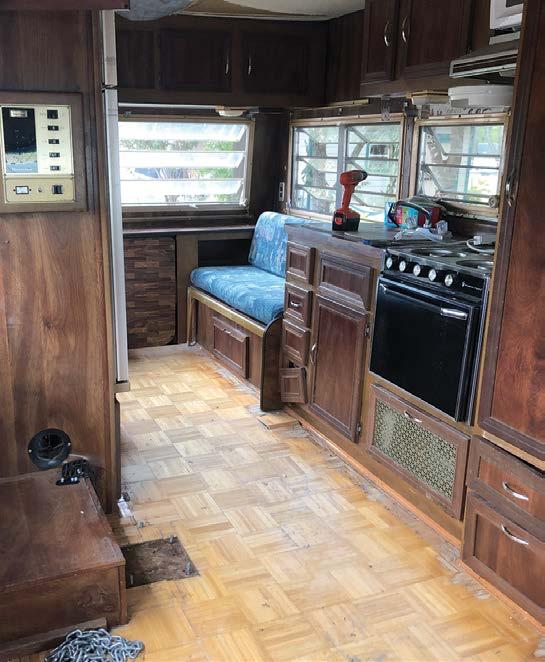


Bree did all the renovations themself, with some help from partner Guilly, and for that they are really proud. “Neither of us had any handy-person experience before working on Hottie. I think when I started last year, the most handy-work I’d ever done was assemble an entire apartment’s worth of Ikea furniture.” Gully had some experience laying floor at his parent’s house and that was about all the experience between them. Bree says when they couldn’t figure something out, they looked to Google, YouTube, and when needed, Bree’s grandpa.
To start, Bree tore down anything they knew needed to come out. As they went along, they found more things that needed to come down. “The build really unfolded along its own little path as I went.” Bree said “I think at the end, I ended up completely rebuilding everything besides one back wall; a very large departure from my original plan of replacing one wall and the ceiling.”
Total renovations included resealing the roof and patching all of the leaks, reframing a rotted and collapsed portion of the ceiling, reframing and rebuilding the entire loft, a custom queen-sized bed, a pop up table and adding two fun wood walls. One vertical shiplap and the other a wooden accent wall by the bed.
“I installed a really cool, 10-inch deep sink in the kitchen, which is one of my favorite things.” Bree adds “I also added a tankless water heater and installed a new water pump.” They’ve given the kitchen a facelift by painting the cabinets a forest green and changing out the hardware as well as new life-proof vinyl floors. “It’s so wild to think back on this project and realize that it only took 11 months. It seemed like so long when I was in it and now, I realize that’s really not that long at all.”

“One of the biggest things I’ve learned from the build is that not knowing how to do something isn’t an excuse to not do it. I used to have such a problem trying to learn everything about something before I tried it. Ultimately it led to me not doing a lot of really cool things because I never felt ready. In renovating Hottie, I’ve found that there’s so much power in saying ‘I don’t know what I’m doing, but I’m willing to try and figure it out’.”
Bree travels the country full-time with Gully and their dogs. During the hot summer months, Bree says they were on a mission to leave Texas and New Mexico, but now that it’s cooled down a bit, they are traveling at a slower pace. Plus, Gully is starting his third year of law school so they are excited to see how life works out in the camper. “I imagine it will mean a lot more time for hiking for me and the pups,” Bree says.
You can follow Bree, Hottie and their not so van life on Instagram @doesthiscountasvanlife.

Our 1968 vintage camper has come a long way from her early years. I first purchased this beauty with my dad just several months before I met my now husband Eric. The first year and a half of our relationship we remodeled our “little one” and our joke is that Eric fell in love with the both of us. We purchased the camper from a family who had it through 4 generations and they were thrilled we were going to bring it back to life.
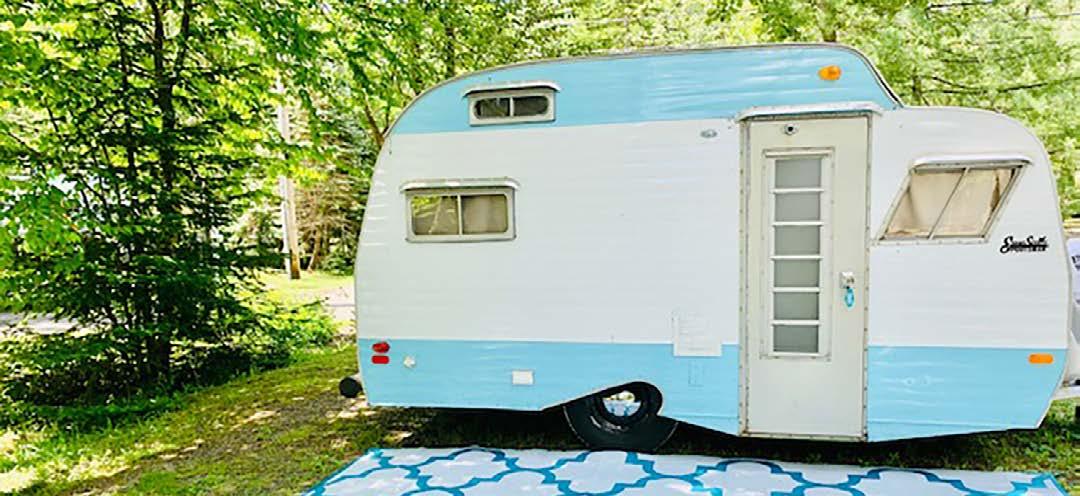
As with any renovation, you have some hiccups as you go along and our main challenge was making the camper functional and safe for us to use. It came fully equipped with a full-size stove and oven combo, propane heater and light fixtures, and a black tar linoleum floor. So, to say we had our work cut out for us is an understatement.
One thing to note, our Serro Scotty Hilander is made up of three quarter inch plywood which makes it easy to work with, as opposed to some of the materials used in new campers today. We began first by removing all of the rotted wood, which involved removing a foot and a half of the frame on
both sides as well as completely rebuilding the rear. In our case we had a rare example of not needing an entire frame rebuild. In many instances these models suffer severe water damage that requires you to build from the ground up, but in our case we were able to keep the original windows and door and had a local auto-body shop bring the original color back to life. The original tires were dry rotted and needed to be replaced.
As for the inside, we had our work cut out for us. The bones of the interior were in decent shape which allowed us to keep the original footprint. The process was interesting to say the least. The camper had been with the previous family for so long and had minimal maintenance and updating while in their care. The hardest part was making the camper functional for current times.
The original model had a full oven as well as propane light fixtures and heating. There was a lot of careful consideration on how to make things safe and practical. We removed all of the original propane and water lines, electrical wiring and appliances. From there we decided where outlets and lighting would be of benefit as well as some new additions like USB charging ports, wall fans and an air conditioner, which was a must in our opinion. All of that is powered by a modern power center similar to what you’d find in other campers.
In lieu of the original full-sized oven we opted for a three burner stove top which provided much needed storage for kitchen items. A new water storage tank and pump were installed to run the kitchen sink. Luckily, we were still able to utilize the existing plumbing for the grey water drain which
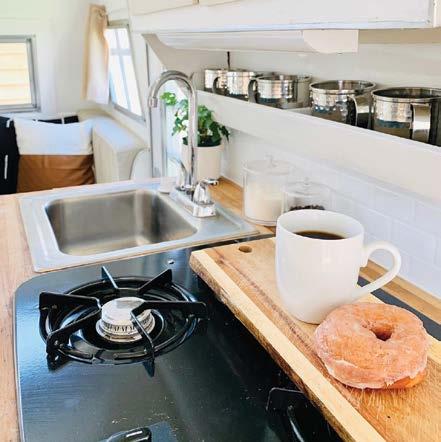
As with any renovation, you have some hiccups as you go along and our main challenge was making the camper functional and safe for us to use.


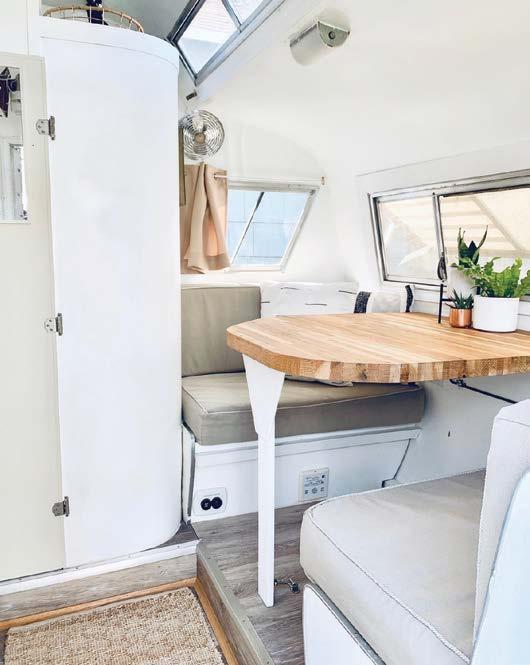

we simply use with a five gallon portable tote. The original bathroom contained a working toilet and black water tank. However, both had been removed prior so we decided to tile the bathroom floor and use a self-contained portable toilet instead.
Once the utilities were complete it was now time to move on to the fun stuff. The black tar linoleum was near impossible to remove, so we installed new underlayment on top and added a floating floor. We modernized the interior design with fresh paint, new cushion covers and decor. The original model had a bunk above the bed but we installed cabinetry instead to add additional storage.
As with anything old, you come across problems at every turn! Towards the end we were just so excited to be almost done that we installed the kitchen faucet backwards by mistake. The handles turn outwards instead of inwards but it actually works out better and gives us a little more space in the sink. The renovation took just about a year and a half because we both work full-time and in the beginning were not in any particular rush to finish.
We love antiques and being able to fully restore a vintage camper has been a wonderful experience for us. Whenever we travel, we are thrilled when people stop us and admire how we were able to preserve what the camper may have looked like in its hay day and how we are able to use it as a modern travel trailer. This Serro Scotty is 52 years old, and while each year it may require some additional maintenance, we look forward to preserving our little piece of history.
Beth and Eric have been traveling in their camper as parttime nomads since 2017. They enjoy taking long weekend trips and the occasional week long trips. Their goal is to get another vintage camper to renovate and have a mobile camper bar! Follow Beth & Eric on Instagram @vintageglampers.



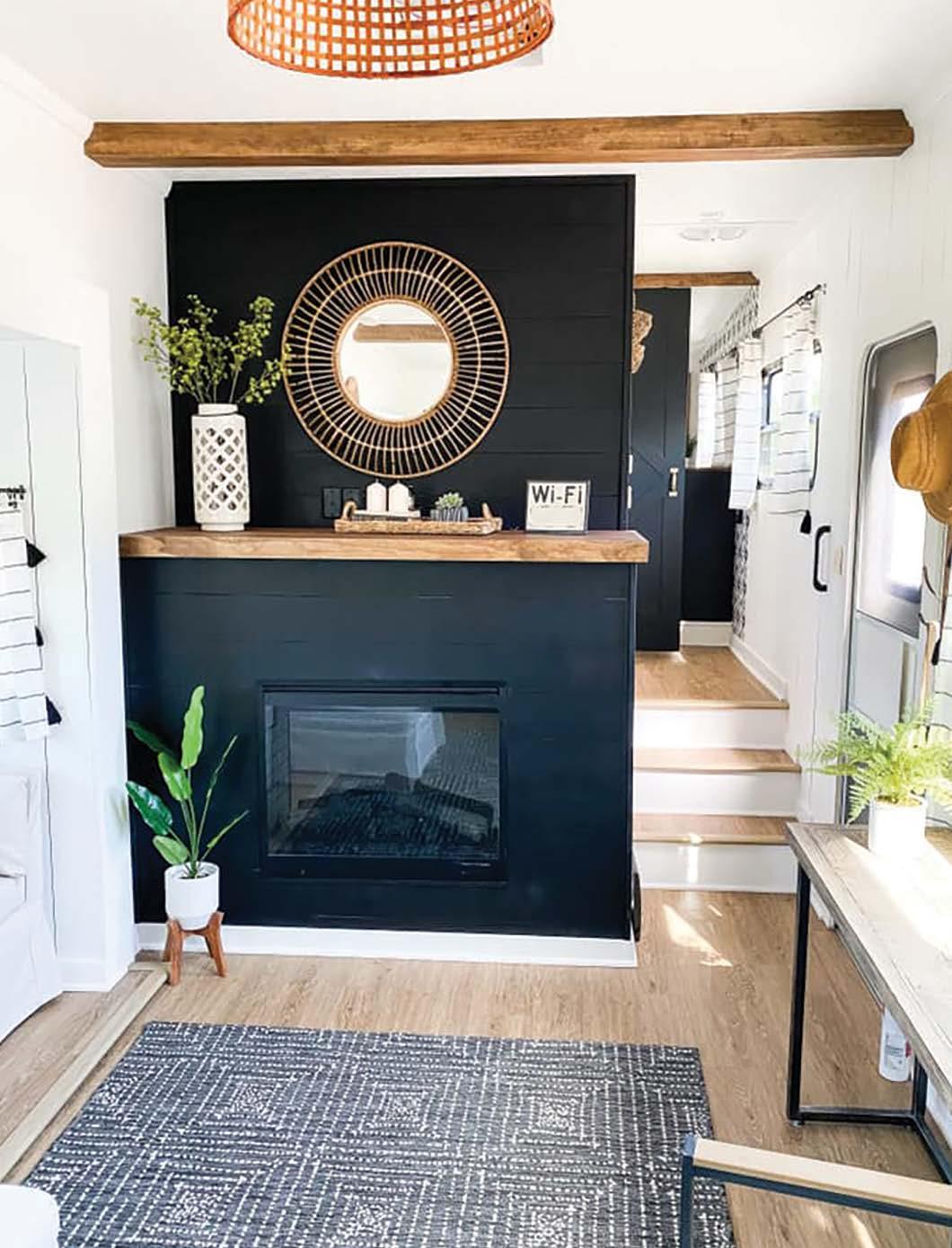
Renee Lois has been designing homes for over 20 years and while building out their home in 2017, they moved the family of five into an RV. They were skeptical about living full-time in such a small space but soon found that they loved the intimate space and the sense of being unplugged for a while.
The experience inspired Renee and husband Brad to start creating tiny homes for others to live in. “We tapped into the RV industry and I don’t think we’ll look back,” Renee said. “I have found that I enjoy designing small spaces so much more than homes and I love this community!”

Renee & Brad started with a 2007 Keystone Montana 307RKD which they renovated and sold. They have since purchased two more RVs which sold before the renovations were complete. For an artist like Renee, the experience has beenamazing.ShecandesigntheRVsinavarietyofdifferent styles, she says her current favorite is coastal bohemian.
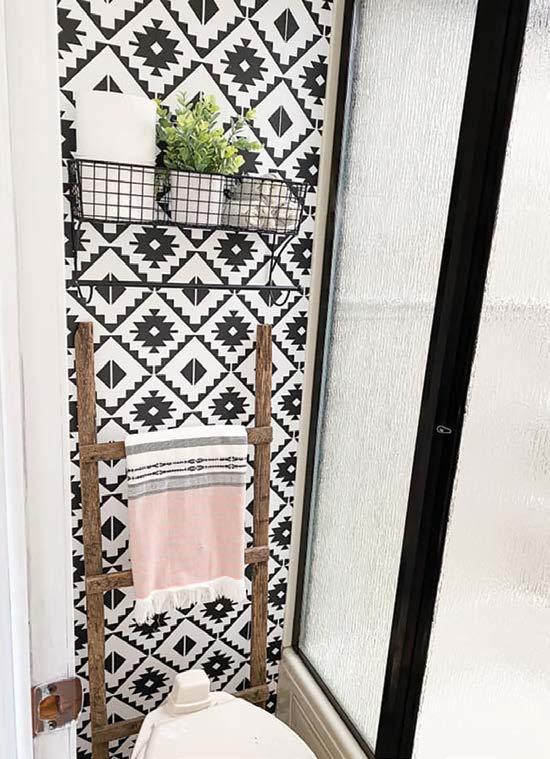
The model featured here is Renee’s second RV renovation, after the family’s own. They updated virtually everything. New custom butcher block counters, all new flooring, new paint, and custom-built fireplace which is their favorite feature. They removed many of the cabinets to open up the space to make it feel more like home and less like an RV. They also installed all new sinks, faucets, fixtures and faux shiplap paneling. “It really was a complete and total renovation. It took us five weeks to complete.”

Brad owned his own business for years that offered him a ton of experience in everything from carpentry, electrical and power tools. “My husband and I both had lots of experience since we’ve worked on homes.” They did most of the work themselves but contracted out some of the tasks like plumbing and electrical to make sure it was done right. “We leave that stuff to the professionals.”
All in the couple spends anywhere from $4,000 to $10,000 on a renovation project, enough to breathe new life into the spaces. “There were so many learning curves on our first one.” Renee said. “The most important lesson we learned is to thoroughly inspect for water damage. Water remediation is so expensive and really puts a halt on the timeline of the renovation. We’ve also learned that married couples, at least for us anyways, should take shifts instead of working in super tight spaces together.” Renee adds with a laugh, “It makes for a much more enjoyable experience and less cursing.”
“It was extremely rewarding but also challenging going from homes to RV’s,” Renee says. “There are weight limitations and decorating restrictions when it comes to walls and what you can and can’t do from a structural standpoint. We absolutely love it and look forward to our next renovation.”
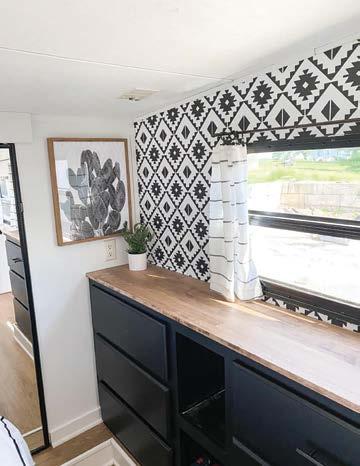
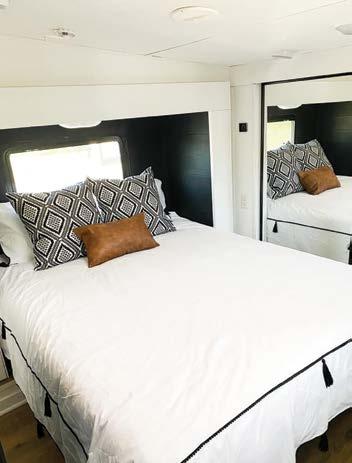

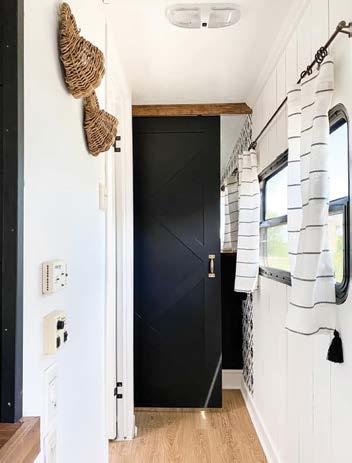
Follow Renee & Brad on their next flips or grab one for yourself on Instagram @Wisco_Flip and on Facebook @WiscoFlip.

“We’ve also learned that married couples, at least for us anyways, should take shifts instead of working in super tight spaces together”
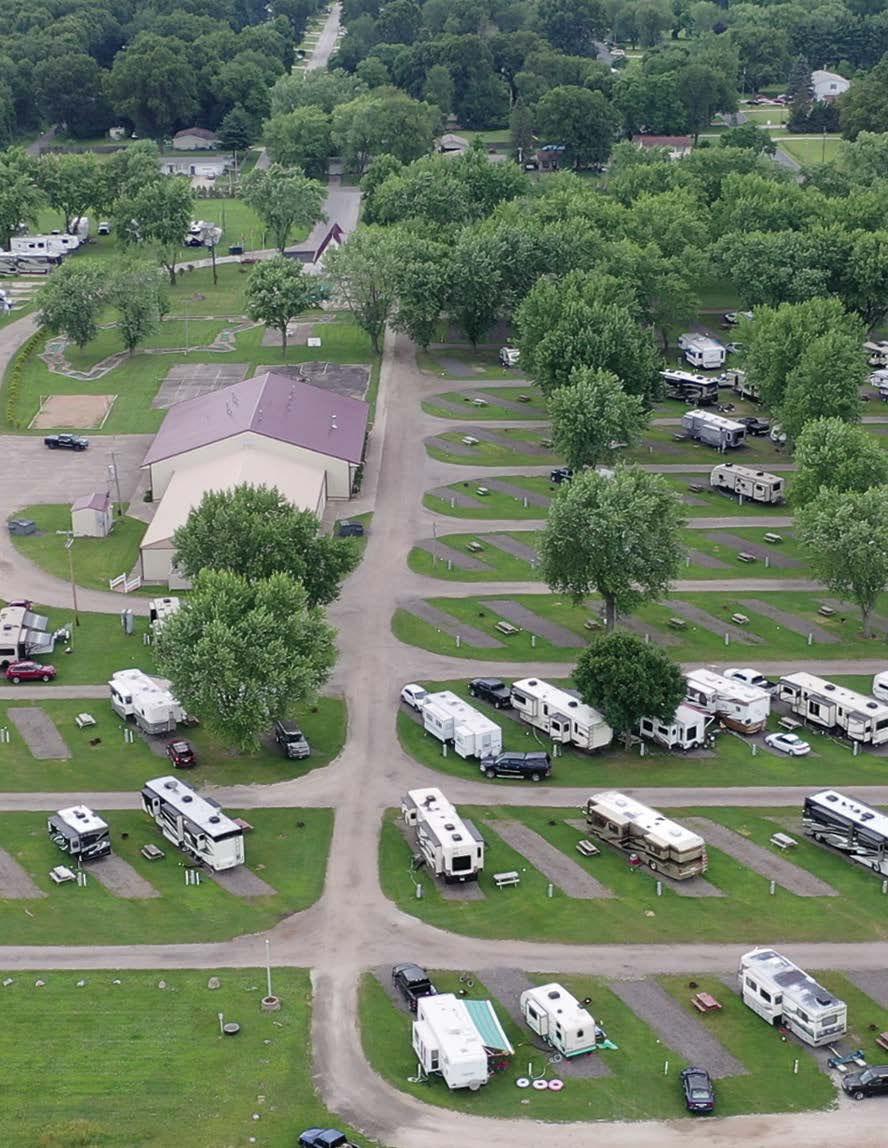
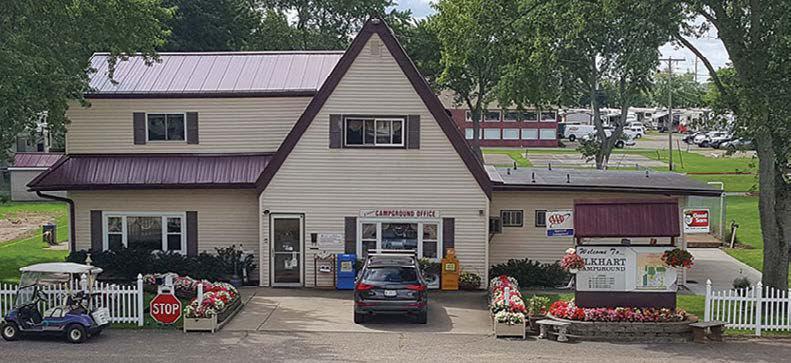

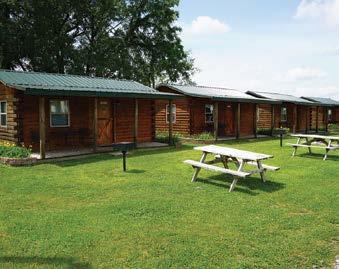

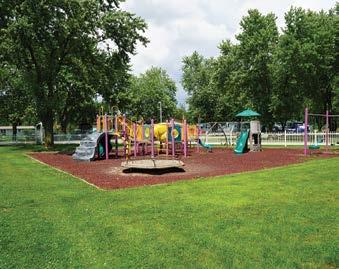
Ever have a day where your list of to-dos causes you to break out in a cold-sweat and hives?
For those living an already hectic lifestyle, transition into a digital nomad lifestyle or into a new homeon-wheels can feel like a daunting process. Especially if you want a personalized build. There are guts and glory in constructing a custom home with your own hands but there is also discipline in realizing that taking on too much can turn a dream into a nightmare.
Thankfully, for those wanting their fantasy setup without the headache, many restoration and conversion companies exist. We tracked down three companies that show a wide variety of what’s out there and picked their brain on why sometimes kicking your feet up is the best option.
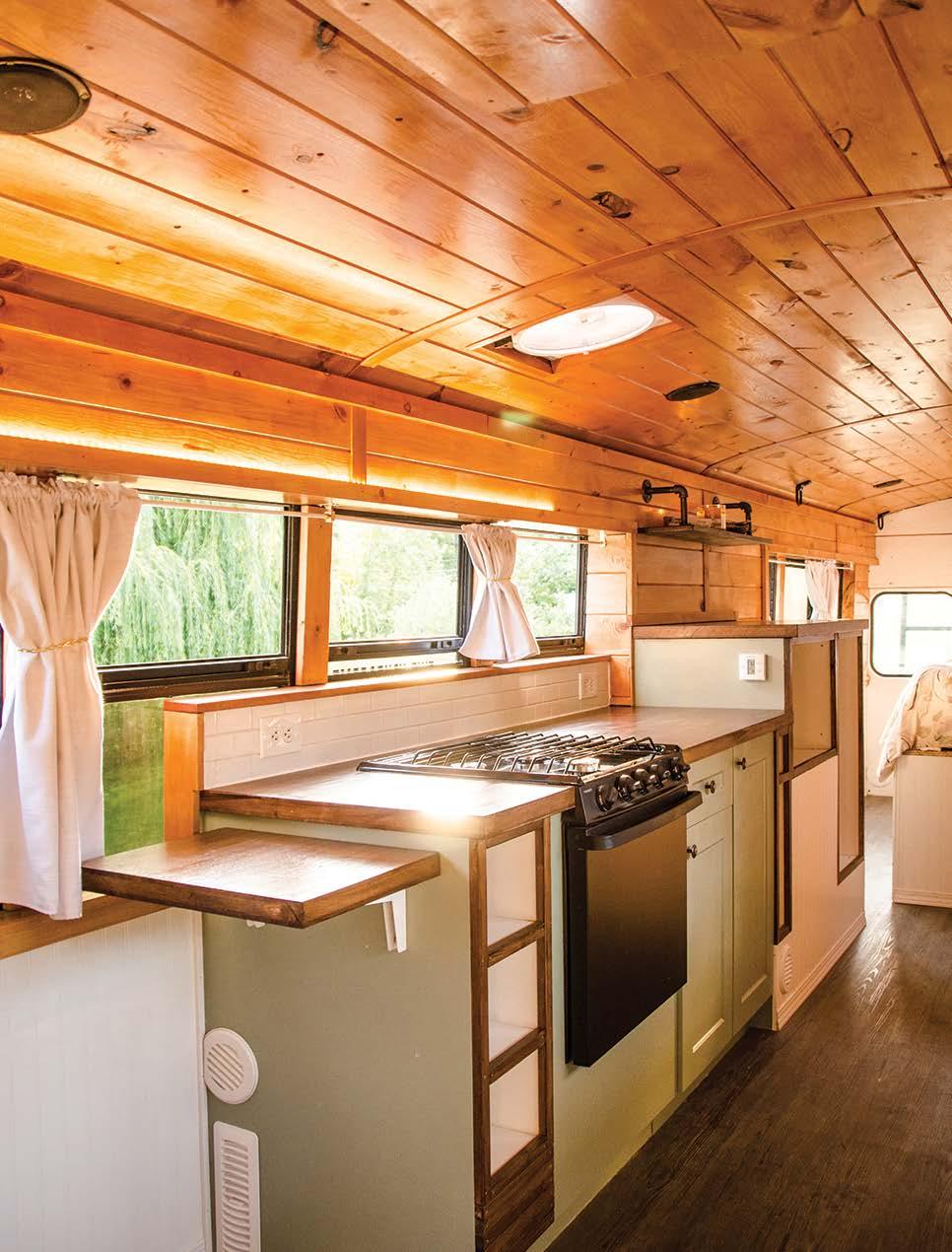
Skoolie conversions are no joke, due to the fact that nothing comesstandard,butPavedtoPines,locatedinSaskatchewan Canada, has perfected the challenge and ship their works of art all throughout North America.
The founders, Mitchell and Steven, met playing college hockey. “We found ourselves often having a conversation saying ‘How cool would it be if we turned a School Bus into an RV?’ after drinking a few.... root beers..” Mitchell explains. The dream became a reality after graduating when Steven purchased a 40 ft school bus he converted and lovingly named Judy. Since then, due to the care and craftsmanship they’ve put into early builds, Paved to Pines has become a growing tight-knit team who boasts they sing almost as much as they work.

One of their most exciting builds was a 45-foot coach charter bus designedtowithstandharshCanadianclimatesforfull-timeliving. Yet, despite a growing list of beautiful conversions they still take


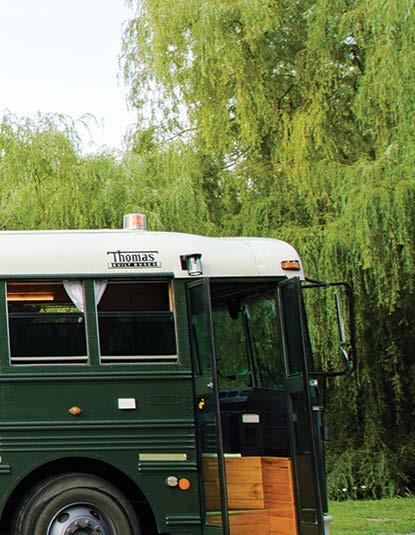
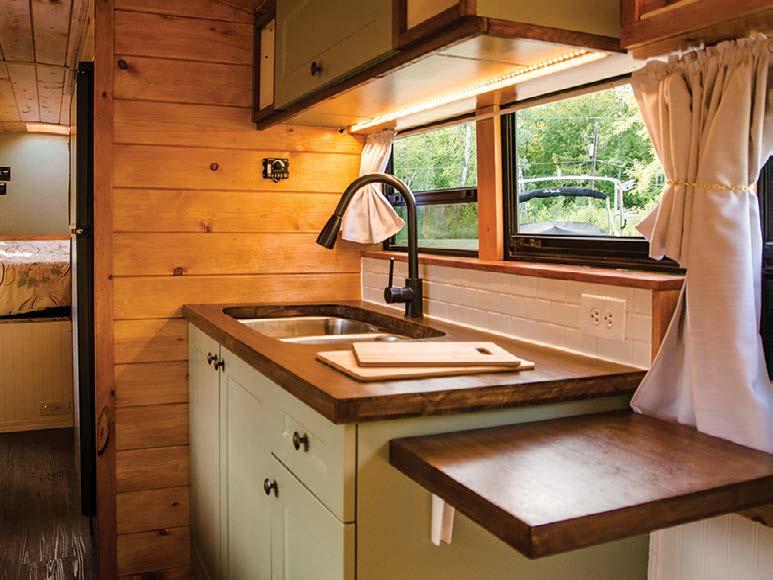
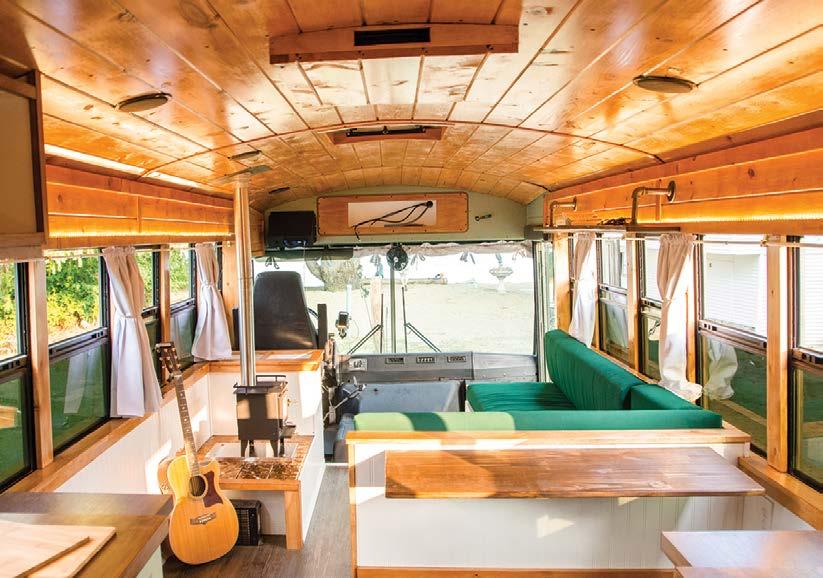
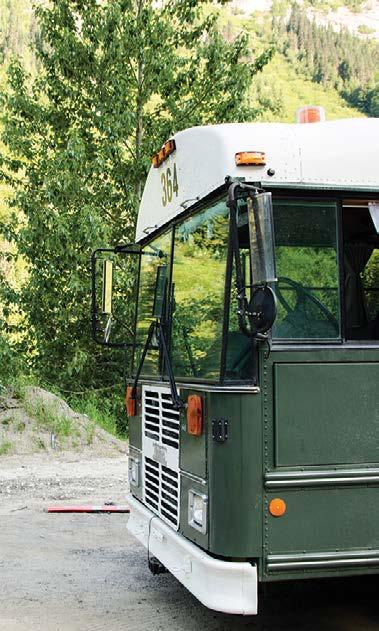

on the headaches that would’ve been on their customer’s hands.
“In 2019 we were working on a Chevy van conversion.” Mitchell shares. “The client wanted a roof she could stand in so we needed to put on a fiberglass topper which is made-to-order and takes 6-8 weeks to get to our shop. They’re not at all cheap, so if you order it, you better get it right. Well, the wrong roof was manufactured and we didn’t realize it until we had the old roof cut completely out and the new roof was on a forklift in the air. One of our team members was yelling “We gotta bring it to the left about a foot!” Another team member yells back, “.... A foot??! we’re already too short on this side!” The Paved to Pines team received the wrong roof from the manufacturer but were able to handle the setback with their knowledge and understanding of the industry.
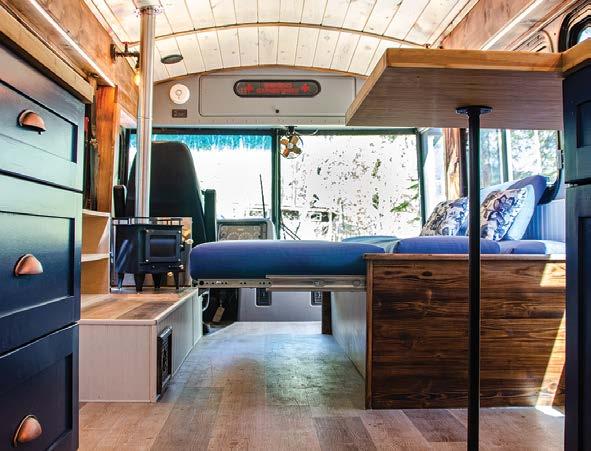
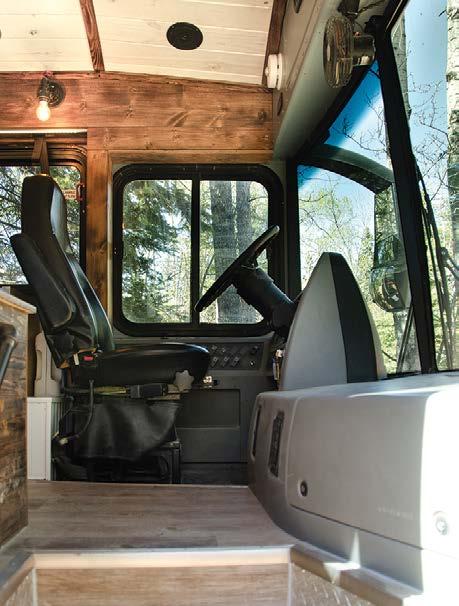


Paved to Pines takes massive pride in helping their customers pursue their dreams and walking people through the journey. Believing that no build can be without a solid base and proper systems, they have special considerations for digital nomads including internet connectivity and custom cabinetry to ensure the safety of necessary electronics. The last thing they think the conversion needs? Their team to build it!
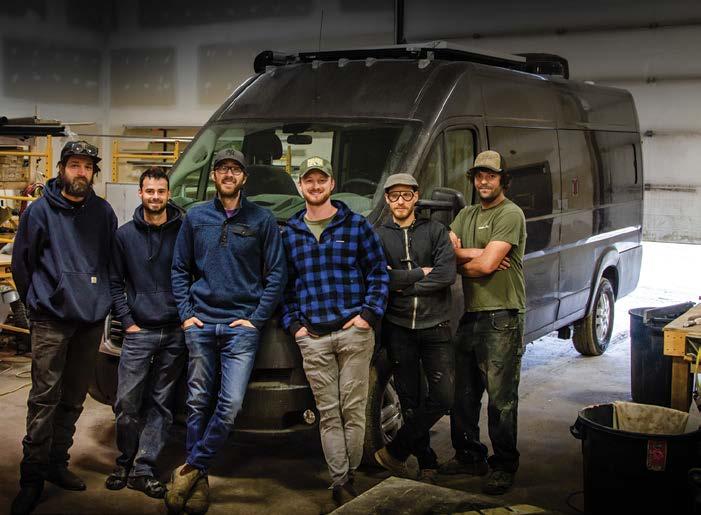
Outside Van, located in Oregon, was living #vanlife long before hashtag culture existed. For over 30 years the founder created custom van builds before officially establishing Outside Van and sharing a long history of creativity and experience with the world. The Outside Van designs are notably unique in their functionality with a focus on comfort. Despite crafting hundreds of conversions, every vehicle is custom.

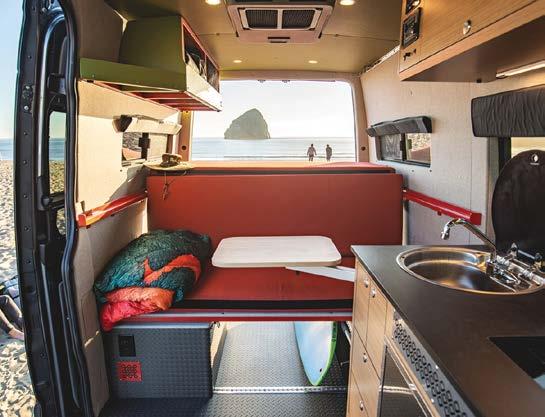
“A van is a visual representation of the individual traveling in it, so we always encourage our customer to reach for the stars.” Brian Jagodnik, Outside Van’s Creative Director, expresses.

Outside Van, est 2007
“Multi-functional, purpose-built custom vehicles”
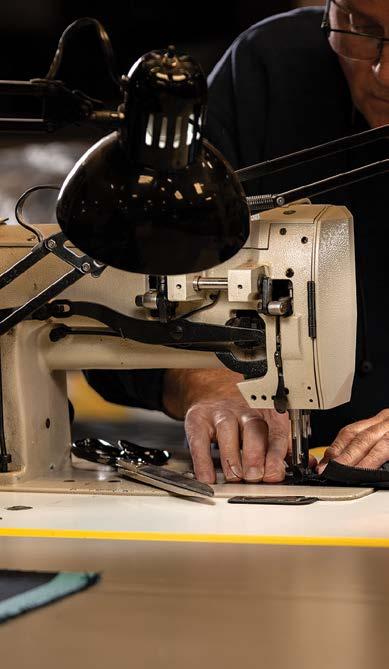
@outsidevan


Yet, despite wanting their vans to be tailor-made they also ensure every build considers critical factors such as weight distribution. Brian adds, “Whether you’re traveling for hours on a highway or offgrid on a dirt road, you deserve a wellperforming vehicle. If you’ve ever driven a poorly laid out van, you know how uncomfortable road trips can be. As much as I don’t like to say it, functionality is far more important than the looks of your van.” Factors such as this allow the team at Outside Van to guide adventurers who seek their services towards an exploration vehicle that is all around solid.


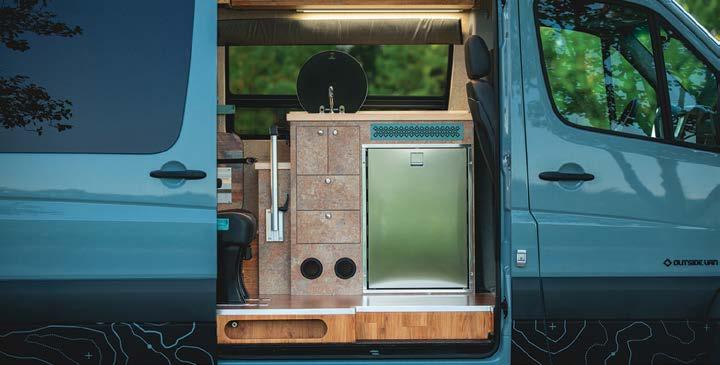
A little secret? The original “Outside Van” was actually a Volkswagen GTI converted to include a bed in the passenger seat and the research and development process has expanded from there. The company has worked with cars, trucks and trailers in the past but are dedicated to the van community now. Brian states, “Vans give digital nomads the opportunity to be free, explore and travel in a perfectly sized stealth vehicle.” Plus, with over 30 years living the lifestyle there are few in the industrythatcanprovideasmanystories, good and bad, to the campfire chat.
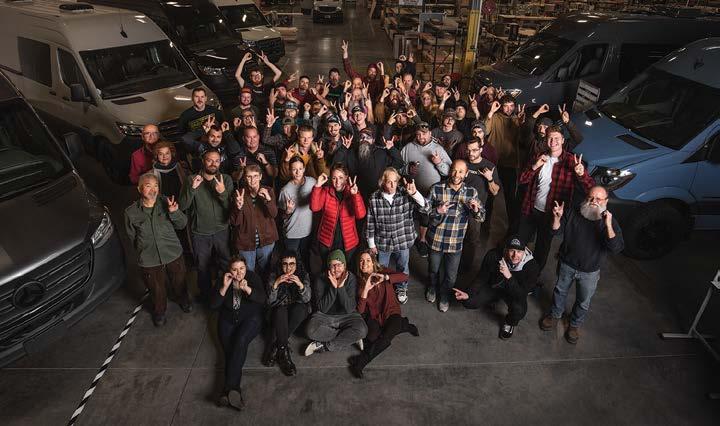
ove vintage? Understandable. Unique classic designs brought to their original glory are statements but restoring these timepieces is no easy feat.FlyteCamp,locatedinWashington, renovates pre-1965 travel trailers out of a love for the quality craftsmanship, real materials, and design details of an earlier time. “Our restorations vary from factory original museum pieces, to modernized classic coaches, to boutique hotel accommodations and mobile business applications” owner Anna shares.

The small operation has a keen eye on detail and a multitude of successful rehabs under their belt, but at one time Anna was not as convinced. “Although my husband came from several generations of trailerites, trailers conjured up images of mildew and paneling for me. How surprised I was to find a beautiful birchwood interior, complete with quality chrome hardware, adorable appliances that not only looked great but still worked beautifully, and quality upholstery. The
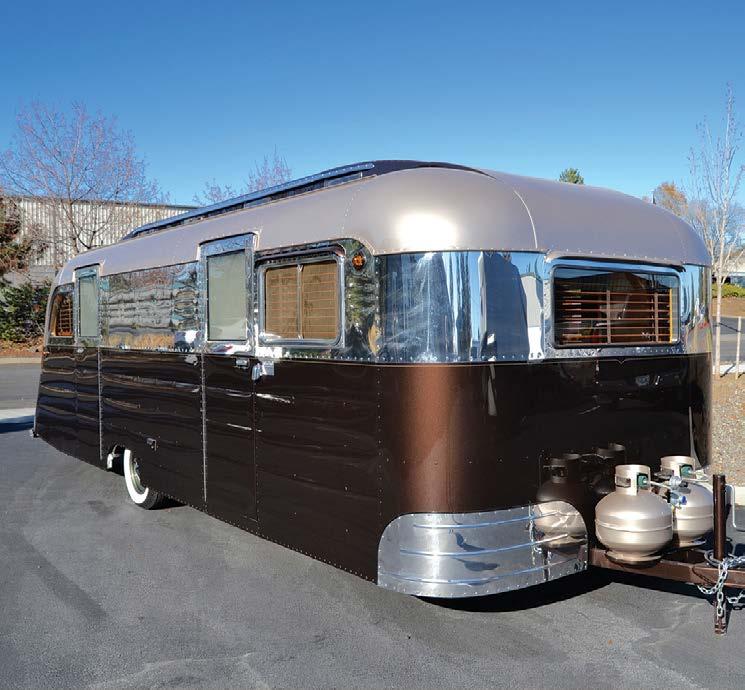
aluminum wings on the exterior of the trailer sealed the deal. I mean, come on!”
Despite the duo’s passion for the trade it is not all sunshine and rainbows. Early on they experienced trailers that appeared in great shape but would arrive as a pile of debris. One 1936 Airstream Flying Cloud Jr even had the roof come off and the walls collapse on its travels to their location. Due to these casualties they’ve become impressively skilled at sourcing quality while researching original appearances to bring the original glory back to these classics.
When considering the digital nomad lifestyle Anna has this to say, “We are happy to incorporate any appliances and electronics that our clients require. We try to integrate in a tasteful manner so as not to detract from the vintage appearance that many of our clients desire, disguising electronics, or locating them where they are not readily visible, placing monitors on actuators etc.” The digital age can meet the creativity, personality and authenticity of pre-1965 with Flyte Camp reconstructing these, built-to-last, choice trailers with the goal of exceeding their customer’s expectations.
Flyte Camp, est 2010
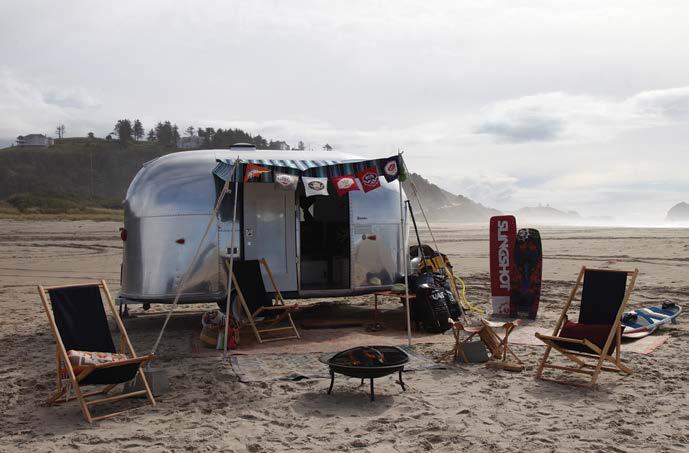
Vintage Trailer Renovations


Facebook.com/flytecamp

“Quality materials and craftsmanship providing another 50 years of memories.”

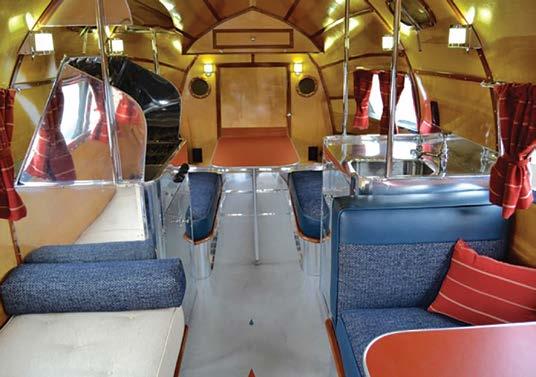

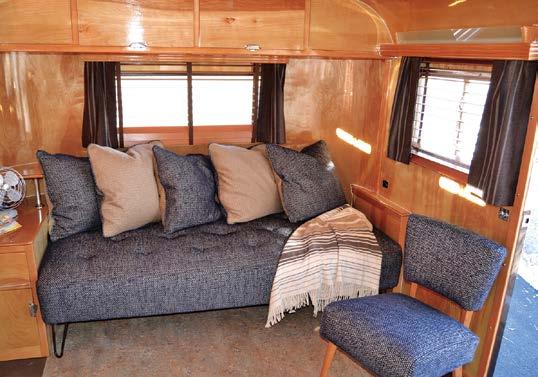


Are you ready to start updating your RV? We reached our community on Instagram and asked them to share some of their easy and affordable RV modifications and renovations. Here’s what they had to say.



We used peel & stick wallpaper from NuWallpaper to give our bathroom a face lift. For about $70 we transformed the space. I used scissors to rough cut and razor blade to trim just along the sides. Two people would make the job a little easier, but I had it installed on my own in about an hour. I chose something with a tan background to match the existing colors seamlessly. Our wallpaper has been through both hot and freezing temperatures as well as arid and humid climates and we’ve had great luck over the last 10 months.
Pro Tip: If you are going to hang things on the wall, don’t have the weight on a command strip on the wallpaper since it’s removable. I use small picture nails to go through the paneling and then command strips to secure from bouncing during travel. Brooke Drake of @TheCamperHouse


We updated the panels in our kitchen and overhead storage in the living room. We were craving texture and depth that was lacking with the builder panels. For a quick and inexpensive update, we found woven bamboo placemats at the dollar store. Originally, we had wanted to use cane, however, it was going to cost upwards of $100 to get this material to us.
When we bought our 2014 Tracer Air travel trailer, I immediately knew the 50 shades of brown had to go. While everything was in functional order, I could not stand the thought of spending our time in a dark cave starkly contrasted by the beautiful Colorado backdrop.
In addition to painting every square inch of our camper, I decided there were some necessary upgrades needed for the cabinetry. The70’sglassdesigndidnotworkwiththeairybohemianvibeIwas seeking, so I decided to use a razor to remove the caulk and pop out the glass panels to replace them with cane webbing. I found it at a woodworking shop online for $9.95/foot and purchased 3 feet. The only other expense was 1/2 in. x 3/4 in. x 96 in. pine molding ($3.78 from Home Depot) which I used to secure it to the cabinet backing with a staple gun. Total cost came to $33.63 and the project took only 2 hours to complete. Leah Skye of @heads.east.tails.west
The dollar store placemats were only $2! We simply removed the panels, which were held in with pin nails, andcuttheplacemattomatchthepanel.Thenreinstalled both pieces. The entire modification took less than 15 minutes and is absolutely what we wanted! Jennifer & Kendall Jennings of @DashboardDrifters

Does your water panel need an upgrade? From million-dollar coaches to the affordable travel trailers, all RVs tend to have water service panels made of plastic. Plastic is more affordable for the manufacturer to put in, but when you plan to use your RV more than just a few weekend’s a year, it’s probably time to upgrade to a full brass system.


The team at Anderson Brass tried to give the RV industry what they wanted, an affordable plastic panel. After a few years they knew they couldn’t continue to make them out of plastic when for a little more money, consumers would get a much better panel backed by a 5-year warranty.
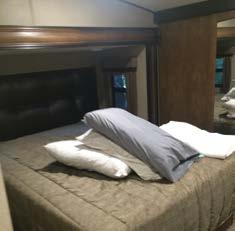
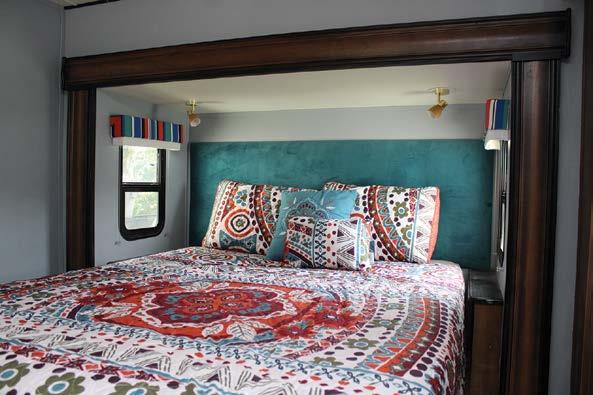
Thesebrasspanelsareeasytoinstallandsomeone with a little plumbing background can handle it. Or if you’re less comfortable, you can always call a mobile RV tech to come swap out your plastic panel for brass in just a few hours. Anderson Brass replacement panels come with everything you need to upgrade your RV’s water system for full-time or part-time living.

Recovering the headboard in our fifth wheel was the easiest project of our bedroom remodel. The entire process took less than half an hour. We unscrewed the headboard from the wall, placed the fabric under the headboard and cut it, leaving about 6 inches extra on each side. Then, we pulled the fabric taught on one side of the headboard, clamped it into place and stapled it down. We continued clamping and stapling in small sections around the headboard until it was completely covered. We left the original fabric on the headboard so it would hold its shape.
Our headboard had buttons covering the screws used to attach it to the wall. We were not able to successfully recover the buttons, so we ordered new snap on buttons from Etsy to replace the originals. The total cost of our new headboard was $50 for the fabric and buttons. Christina Pate & Justin Baney of @TedsRVTravels

When the shade is raised you‘ll always have a clear view of the scene outside with added privacy inside. Both interior and exterior black window frames are included and the kit comes with an integrated seal to keep moisture out, giving your RV a sleek, stylish window solution.

Steel construction and all-weather fade resistant fabric, this chair is durableandsturdy.Ergonomicallydesignedtoreducemuscletension and stress and enable you to recline in total comfort. Includes a removable headrest for additional comfort or to use as lumbar support. With a removable cup and magazine holder, you can enjoy drinking or reading while relaxing. Plus an adjustable sun shade canopy provides protection from the sun.

Improves voice quality and data on all available networks speeds. This antenna is compatible with trucks, vans and RVs. Comes with parts to accommodate multiple installation options. Included are 2 mast extensions for adjustable height, a 3-way antenna mount, side exit adapter, antenna spring, cable adapter, and thread lock packets.

Minimizes front-toback and side-to-side motion. Heavy-duty steel construction footpads to combat sinking and tilting. Supports and stabilizes up to 1,200 lbs and djustable from heights.
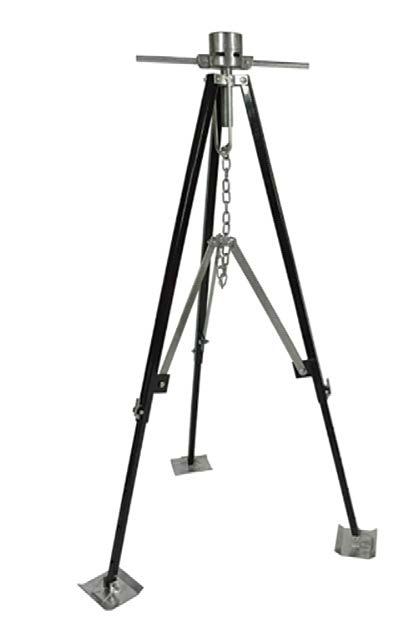

Tree straps and carabiners are included with this hammock making set up a breeze. With 9-foot long straps and 5 separate loops, so you can adjust your hammock to the perfect height and comfort level. Attach to anything sturdy and get to relaxing in just one minute!

With a lighted nozzle and display screen, this gauge provides ultimate visibility in low light or at night. Digital display instantly shows exact reading, eliminating the guesswork of analog gauges.Nozzlesealstovalvestemfor quick and accurate measurements.
High-visibility cones with two reflective bands, these cones can be easily collapsed down to 1.38” in height for easy storage. Simply push down on the top to collapse, and pull when ready to use again.
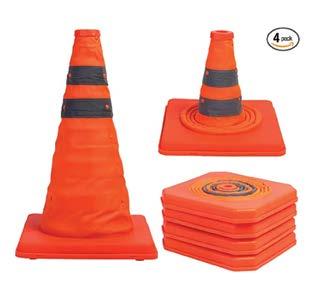
Large, heavy duty, and with no flat wheels makes transporting the tow tank smooth and effortless. Removable steel tow adapter allows you to easily roll the tote tank as you would a suitcase. You can transport it by towing it slowly behind a golf cart or truck.

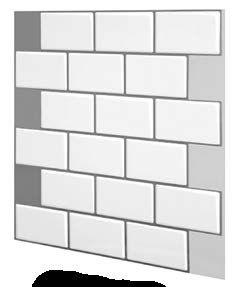
Always be preapred. This easyto-carry, organized first aid case includes a shoulder strap to keep hands free.
The RV renovators best friend! These peel and stick realistic tiles offer the 3D effect of real tiles with no glue, no grout, and no mess! No discoloration or peeling after installation and resistant to heat, water, and humidity. Anti-bacterial and anti-mold material that does not emit dioxins, perfect for your home on wheels.
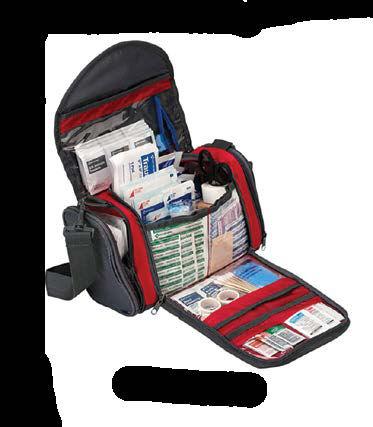
Each fall, my wife Sandy and I head south in our RV from British Columbia to spend the winter in Arizona. Over the years, we’ve taken several routes through Oregon. However, coastal Highway 101, bordered by the Pacific Ocean to the west and the Oregon Coast Range to the east, is our favorite. We take our time, seldom traveling more than a couple of hours a day, to enjoy the breathtaking scenery and the many activities and attractions along the 360 miles from Astoria in the north to Brookings Harbor in the south.
For RVers, several practical considerations are worth noting: over 80 state parks and recreation areas dot the Oregon Coast, as well as numerous private RV parks suitable for big rigs; free overnight parking is available at a few casinos and big-box stores; and the absence of a sales tax in Oregon makes almost everything, including fuel, less expensive than Washington or California.
Astoria, at the mouth of the Columbia River, is a port city reminiscent of a miniature San Francisco: rolling hills, a trolley car, boutiques, galleries, and upscale restaurants with water views, where sea lions are often seen frolicking in the river. A prominent landmark is the Astoria-Megler Bridge, a four-mile steel cantilever bridge that connects Washington and Oregon. This 200-foot-high structure allows freighters from around the world to access upstream ports, including Portland. If you didn’t get a birds-eye view driving across the bridge, consider visiting the Astoria Column, a 125-foot tower with an observation deck that offers expansive views of the city, landscape, and maritime environment.

A
locations to spend a
vibrant little community has a downtown promenade along the ocean with a statue of Louis and Clark, marking the location where they ended their two-year exploratory journey in 1806 from the Mississippi River to the Pacific Ocean. Several buildings throughout Seaside display colorful murals of historical events, everyday activities, and marine life. A carousel and various amusement venues, including bumper cars and an arcade, are a delight for kids of all ages. Seaside and several other coastal communities have museums, which provide an historical appreciation for Native Americans and early settlers; as well as aquariums that connect you to the sea and inspire ocean conservation.
Many tourists enjoy the beaches all along the Oregon coast for relaxation, hiking, dog walking, and just marveling at the magnificent rock outcroppings, with names like Haystack Rock,ElephantRock,andTheNeedles. Theserockformations date back 14 million years, the result of a massive eruption of lava inland that made its way out to sea. Numerous sea birds such as terns and puffins nest in these larger rock structures just offshore. Tidal pools are home to an abundance of sea life, including starfish, crabs, anemones, clams, and slugs. Surfing, paddle boarding, and biking are very popular and various outlets provide equipment rentals.
In many coastal communities, some streets lead directly to the beaches, allowing motorists to drive their vehicles onto the sand. However, be aware that laws prohibit overnight RV camping on all Oregon beaches, which is just as well as high tide could put a damper on your room with a view!
Tillamook, about 50 miles south of Seaside, is home of the
Tillamook Cheese Factory, a very popular tourist attraction with a parking lot suitable for large RVs. Spend an hour or so on a self-guided tour, which is not only informative but provides free samples of various cheeses. Watch and learn how all of these products begin with cow’s milk, become processed, and end up packaged for shipping to grocery stores throughout the country. Their Visitor Center sells various cheeses as well as yogurt, sour cream, ice cream, and a variety of memorable souvenirs. We always pick up a package of fresh cheese curds for the road, which are usually gone before we get to California!

Another 50 miles south is the small, mostly residential community of Neskowin and a gated RV Resort, noteworthy for its cadre of rabbits of various sizes and colors. Many RVers feed them carrots on occasion so they just hop around, waiting for handouts.
Kayaks and paddleboards are available for rental at nearby Pacific City for
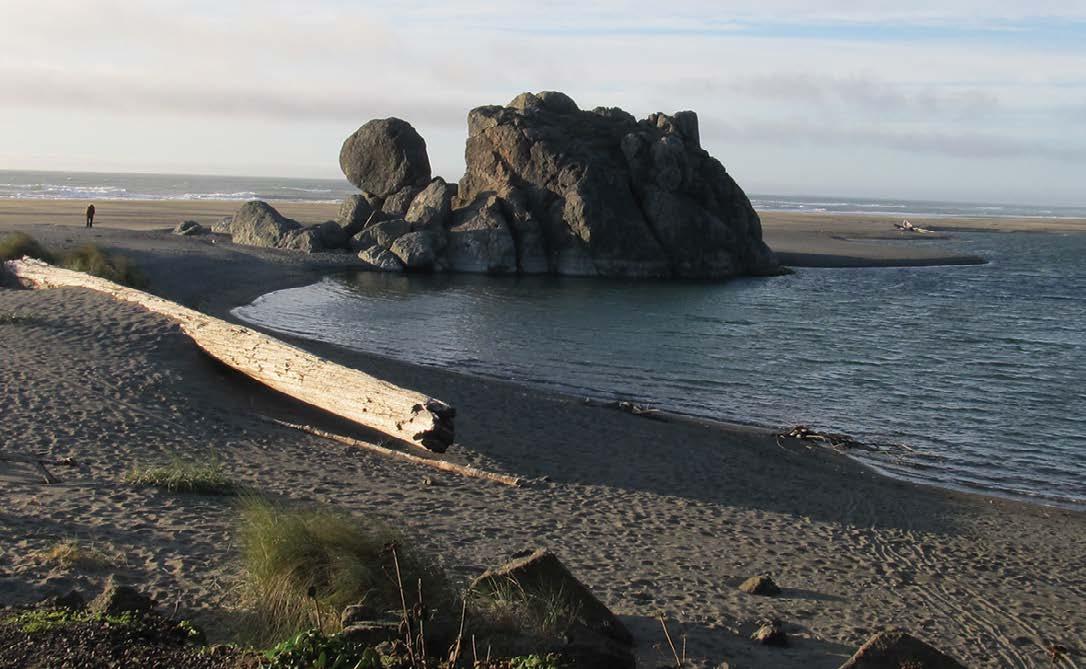
enjoying the beautiful and peaceful Nestucca River or the pristine bird estuary of Nestucca Bay. A noticeable landmark is Proposal Rock at the south end of Neskowin State Beach, which provides a short scenic uphill hike at low tide.

A short distance south is Lincoln City, with Chinook Winds Casino, outlet stores, antique shops, and great beaches for kite flying. A few miles further is Depoe Bay, known as the “world’s smallest harbor,” offering whale-watching and fishing charters. Continue south another 25 miles and you’ll arrive at Seal Rock, aptly named for the cute seals and sea lions that congregate here.
Eleven lighthouses are distributed along the Oregon coast, a few of which are open to the public. Heceta Head, about 40 miles south of Seal Rock, is one of the most popular and scenic lighthouses on the coast, open year-round with ranger-lead tours and a parking lot suitable for RVs.
A bit further south is Florence, with its charming Old Town DistrictatthemouthoftheSiuslawRiver. Spendadaystrolling along the boardwalk, browsing through various shops, and dining in cozy restaurants, some with patios overlooking the river. Visit the Siuslaw River Bridge Interpretive Center to learn about the Historical Art Deco drawbridge built in 1936 to replace a ferry, the original means of transporting passengers across the river.
Florence is the northern gateway to the Oregon Dunes National Recreation Area, a favorite spot for hikers, bikers, and drivers of All-Terrain-Vehicles to explore 40 miles of wind-sculpted sand dunes, some towering 500 feet above sea level. Rentals of dune buggies and sand boards (sort of a snowboard for sand), as well as eco-tour operators, are available at various locations.
At the lower end of this giant sandbox is Coos Bay, the most populated city on the coast, over 16,000 residents according to a recent census, but with a friendly, small-town ambiance. The Mill Casino provides a full-service RV Park, as well as free overnight RV parking in their large lot. A popular Coos Bay attraction is the boardwalk, providing stunning views of the bay and harbor especially at sunset.
We always make Gold Beach one of our last stops to kick back and relax at a big-rig-friendly RV park with private hot tubs available at some sites. An authentic Mexican restaurant is located beside the office and a brewery is across the street where you can learn how they make beer and sample some of their lagers, pale ales, and porters. If you’re looking for fun and excitement, consider taking a jet boat from Gold Beach up the wild Rogue River. Experienced and knowledgeable guides will expose you to amazing scenery, 360-degree spins, splashes, stories, and humor. From the RV park, a short walk brings you to a fine sandy beach with a turtleshaped rock and a granite monolith at the shoreline … icons of Nature at its finest.
Keep in mind if you’re a Snowbird intent on reaching your favorite Sunbelt destination as quickly as possible, you can hop on Interstate 5 in Portland and pass through the state in about five hours. However, if you adhere to the adage “enjoy the journey, not just the destination,” consider spending some time coasting on your next trip through Oregon.
Larry MacDonald has a Ph.D. in Psychology and over 30 years of experience RVing (12 full-time) and freelance writing for various RV magazines. His book RV Oopsies: 101 Dumb Things that RVers Do! is a compilation of ten years of research on RV mishaps ... a “must-read” for all RVers wanting to learn first-hand what NOT to do while RVing.

National Forest Road 3243

North Yellowstone Entrance

GPS: 45.07061,-110.68004
During my solo 16-month RV journey I stumbled upon beautiful locations all around North America. In July of 2019 I was lucky enough to find this hidden gem on the edge of North Yellowstone. The provided coordinates lead you through the small town of Gardiner and up a dirt and gravel road. You will pass Eagle Creek campground which is a dry camping area but a good back up plan!
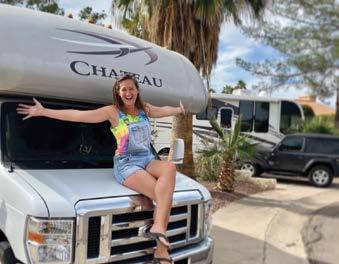

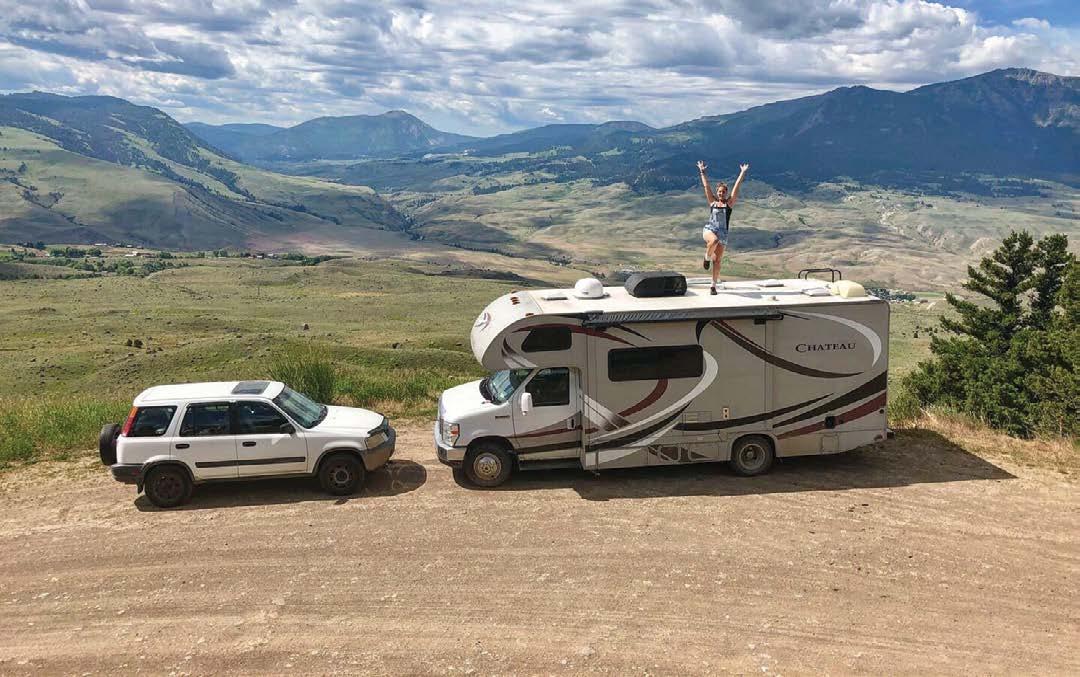

The incline can be steep and windy at 7,064 ft elevation so take it slow and steady. The sites are pull offs on the side of the road and most of them face the cliff which gives you a beautiful view of the park entrance, thunderstorms rolling in, and the most vibrant rainbows. The location gives you complete privacy and yet is 20 minutes from town and the North Entrance of Yellowstone National Park. The town of Gardiner includes tasty food options, fun libations, a few slot machines, plus some light shopping. Don’t forget to visit the natural hot springs located in Boiling River!
Cara Hefty @caraostara

GPS: 43.2980, -103.4463

Shep’s Canyon is a hidden gem in Southwest South Dakota and made our list of “must come back” spots. This beautiful area is about 10 miles south of Hot Springs and situated on the west side of Angostura Reservoir. Known for its water activities, we took advantage of working on our paddle boarding skills and letting the dogs swim in the refreshing blue water.

Sites are dotted along the shore line and are designated by fire rings with short walking paths down to the water. All rig sizes can fit, just take it slow coming down the slightly rutted dirt road on the way in and make sure to get there early enough to grab a great spot. The weekends can fill up with walleye fisherman and boaters, but the primitive camping spots never filled up completely. The sites are mostly well kept and mowed. There’s a pit toilet also available at the boat dock. Cell service for both AT&T and Verizon were fast enough for us to work online and stream shows.
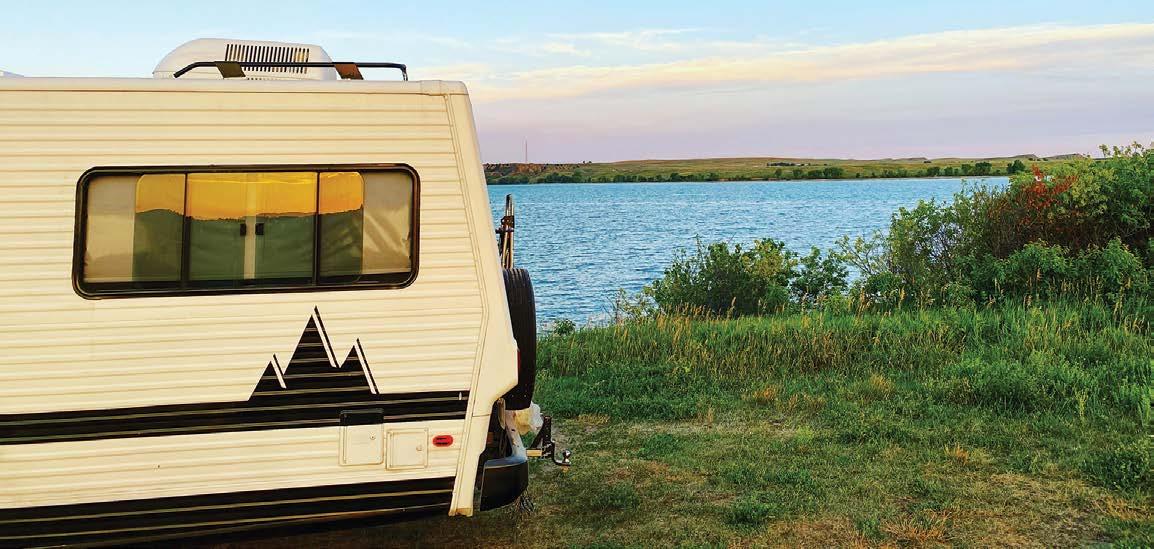
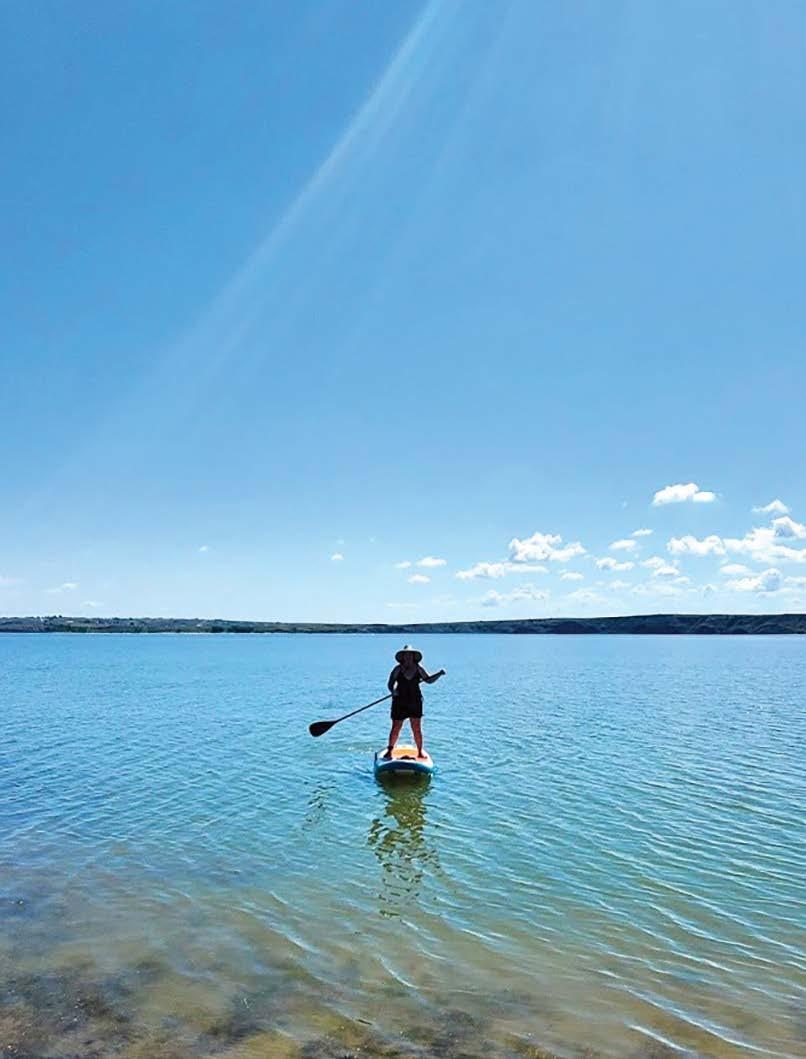
We enjoyed the comfortable and picturesque drives to nearby locations like Wind Cave National Park, the Mammoth Site, and Custer State Park to name a few. Take your pick on amazing hikes available in the area and places to get that postcard worthy photo. Oh, and be sure to check out the local springs at Cascade Falls just 15 mins from the lake. So refreshing!
All in all, we really enjoyed the quiet and beauty of this spot. It provided all the necessities we were looking for like accessibility, views, and wallet friendly. If you’re wanting to stay in the area, but hoping for something a bit off the beaten track that provides R&R and epic sunsets, this is it!
Misty & Savanna Reise @_changingthestory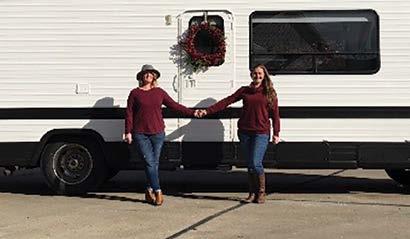
Western Colorado
GPS: 38.3168, -108.1633
(for Iron Springs Campground)

FarawayfromColorado’smoretouristy destinations, Norm and I found it easy to self-distance in the Uncompahgre National Forest. With almost one million acres, we spent a month boondocking in the area and found no shortage of free campsites, scenic drives and hiking trails.
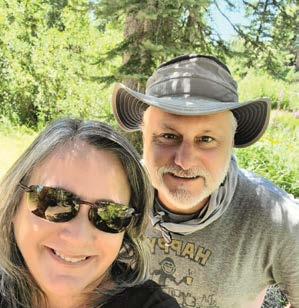

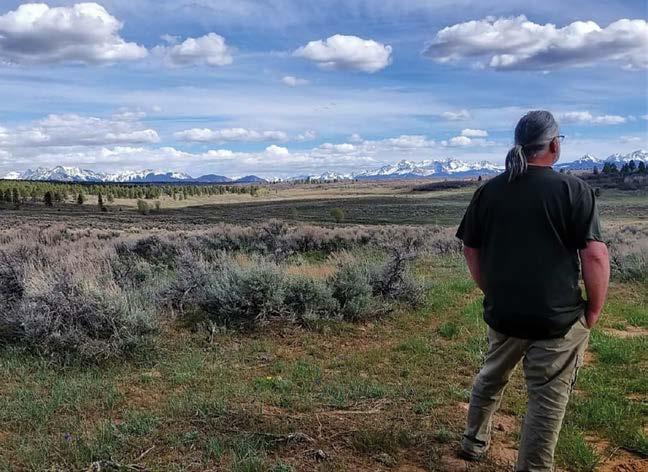

You will find a vast difference in elevation, vegetation and traffic depending on where you stay. The north side taking Hwy 90 out of Montrose is higher in elevation and geared more to ATV enthusiasts. Dusty roads and machine noise should be expected. There are excellent group camping options here with a mix of Aspen, Spruce and Pine.
On the south side, we stayed in massive campsites under a canopy of tall Pines with no other campers in site and with less road traffic. There are two free campgrounds on the north side; Iron Springs and Columbine, none on the south side.

My favorite moments were taking in the majestic San Juan Mountain views on the south side driving from Montrose toward Norwood on Dave Wood and Sanborn Park Road. What we found lacking on both north and south was any presence of water, no creeks, rivers, or lakes to mention. However, if you are looking for peace and solitude, this is the place.
Before you go, make sure you are fully provisioned. It is a long, rough 40-60 minute drive to town. If you need to stay connected, you may find it difficult. With AT&T we found only a few places we could drive to for connectivity. Despite these issues, this is an area we plan to frequent again soon!
Norm & Susan Ferguson @silverbadgeradventures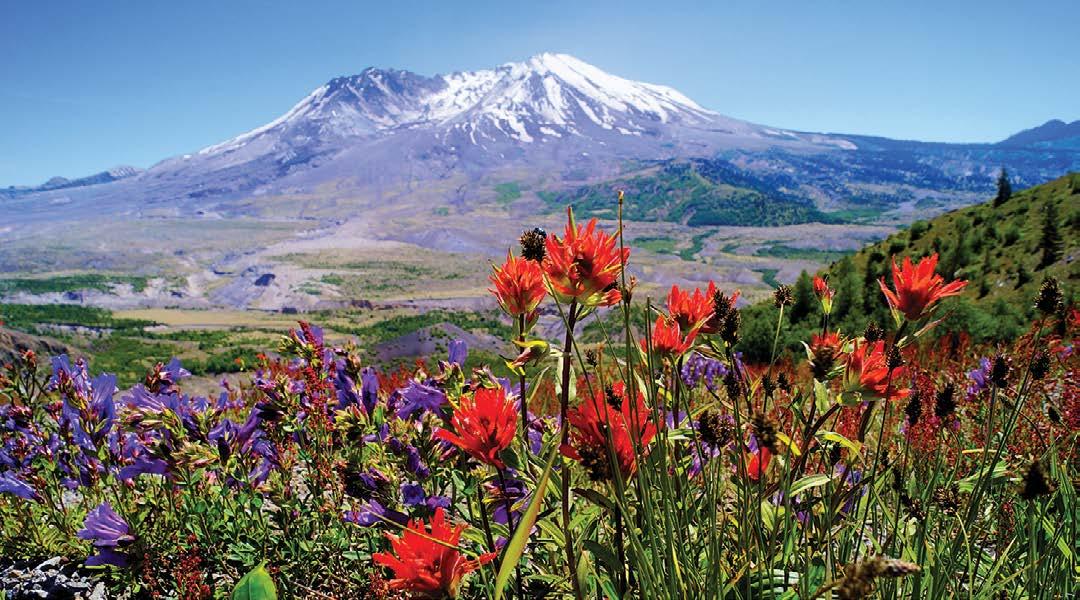
Imoved to Eastern Washington State in January of 1980, just four months before the first volcanic eruption in the lower 48 in American’s recent memory. I had moved from Southern California, earthquake country, and my initial thought was I had brought a natural disaster with me.
I was fishing from my raft on the Yakima River early on May 18th. At around 8:30am fish began jumping, some larger than I had ever caught there, and soon the river was boiling with jumping trout and bass. Frustrated when none would bite, I started back to shore. Before long, round, billowy, gray and pink clouds moved in quickly from the west until it filled the sky and sunlight grew dim. That was my clue something big had definitely occurred. This was before the Internet or cell phones but the radio station in my car broke in with the news on my way home. Ash began to fall soon after, and we ended up with only a couple of inches in the Tri-Cities as thicker swaths of ash fell farther north.
Most people are aware of the devastation from that blast –massive mudflows and lahars killed 57 people and destroyed 250 homes, 47 bridges and 185 miles of highway, while magma created a large pyroclastic flow which flattened forests and buildings over 230 square miles.
I have returned to Mount Saint Helens several times over the years as the US Forest Service built and maintained several viewing points and interpretive centers around the mountain. Seeing the volcano was a bucket-list item for my wife and after a year of full-time living in our fifth wheel, we made it a point to visit the National Park. I hadn’t seen Mount Saint Helens in a few years by then and was amazed at the recovery the volcano has experienced. Spirit Lake has re-
By Jack Huberestablished itself, though shallower than before, trees and other vegetation are growing and wildlife has re-settled the area. Nearly 200 million board feet of dead timber were salvaged after the eruption and around ten million trees were planted to reforest that land.
The Mount Saint Helens Visitor Center is considered the gateway to the mountain, located just over 30 miles away, and it offers impressive views of the western slope. It is one of the better National Park interpretive centers we have visited and a great starting point for a day trip. The volcano’s history is described with large models, displays, seismographs and a splendid, informative video.
Weweresoimpressedbythevividcolorsaroundthemountain and highly recommend making a point of visiting the National Park if you are in the region. A full day is sufficient but you may want to spend more time in the area to explore on foot. With a climbing permit you can even climb to the summit.
Jack Huber is a novelist, poet, photographer, blogger and podcaster. He has published seven novels in his Pat Ruger Mystery Series as well as six books of poetry and photography. Jack and his wife have been living on the road, traveling coast to coast in their 31’ fifth wheel. He writes articles for several travel and RV websites as well as personal interest pieces. Jack has also published over 25,000 photographs from around the country on his website. You can find them at jackhuber.com.

Agata Wisniowska
Marcin Komorowski
Jessica Stiles & Greg Williams
Chris & Christi
Natalia Pollard
Celeste Orr
Kelsey Cahill
Tina Wann
Bree Contreras
Beth & Eric Cronin
Renee Lois
Monica Woller
Brooke Drake
Jennifer Jennings
Leah Skye
Christina Pate
Larry MacDonald
Cara Hefty
Misty & Savanna Reise
Norm & Susan Ferguson
Jack Huber
Rootless Living Magazine

Volume 1 | Issue 5 | Sept/Oct 2020
Publisher Demian Ross
Editor Nikki Kirk
Advertising Information: sales@rootlessliving.com


ROOTLESS LIVING • 3916 N POTSDAM AVE #3194, SIOUX FALLS, SD 57104
Disclaimer: One of the great things about digital publications is the ability to link you directly to the products or services you want to hear more about. Some of the links in this issue are affiliate links where we earn commissions on goods or services you buy. These commissions help us to continue to publish the magazine. Rootless Living is also a participant in the Amazon Services LLC Associates Program, an affiliate advertising program designed to provide a means for sites to earn advertising fees by advertising and linking to Amazon.com. If you have any questions please don’t hesitate to reach out to us at info@rootlessliving.com
Copyright © 2020 DNI Group LLC. All Rights Reserved. Reproduction in whole or in part without written permission is prohibited. No responsibility is assumed for unsolicited submissions.


The fearless conversations about race that you’ve been waiting for!
Over the years and despite thousands of interviews, Conan has never made a real and lasting friendship with any of his celebrity guests. So, he started a podcast to do just that.


A weekly salonstyle supershow where comedian Duncan Trussell and guests explore the outer reaches of the multiverse.

The podcast hosted by American comedian, actor, sports commentator, martial artist, and television host Joe Rogan.

Alaska, 1972. Two congressmen vanish on a small plane. They’re never found. In 1995, a mobster tells the FBI the plane was bombed. What happened?
Whether you’re just getting started or are a seasoned camping expert, Janine’s practical tips, inspirational interviews and experiences from the road will inspire you to ‘go places and do things!


Bringing the best minds under one roof to discuss powerful ideas in personal growth for mind, body, spirit, and work.

Started by the United States Forest Service as a part of “Your Forests Your Future.” Bringing you interesting and relevant stories about what’s happening on your public lands.
Podcasts are listed as a courtesy to our readers and compiled from recommendations in various Facebook groups. If you have a podcast you think we should include, email us at info@rootlessliving.com
